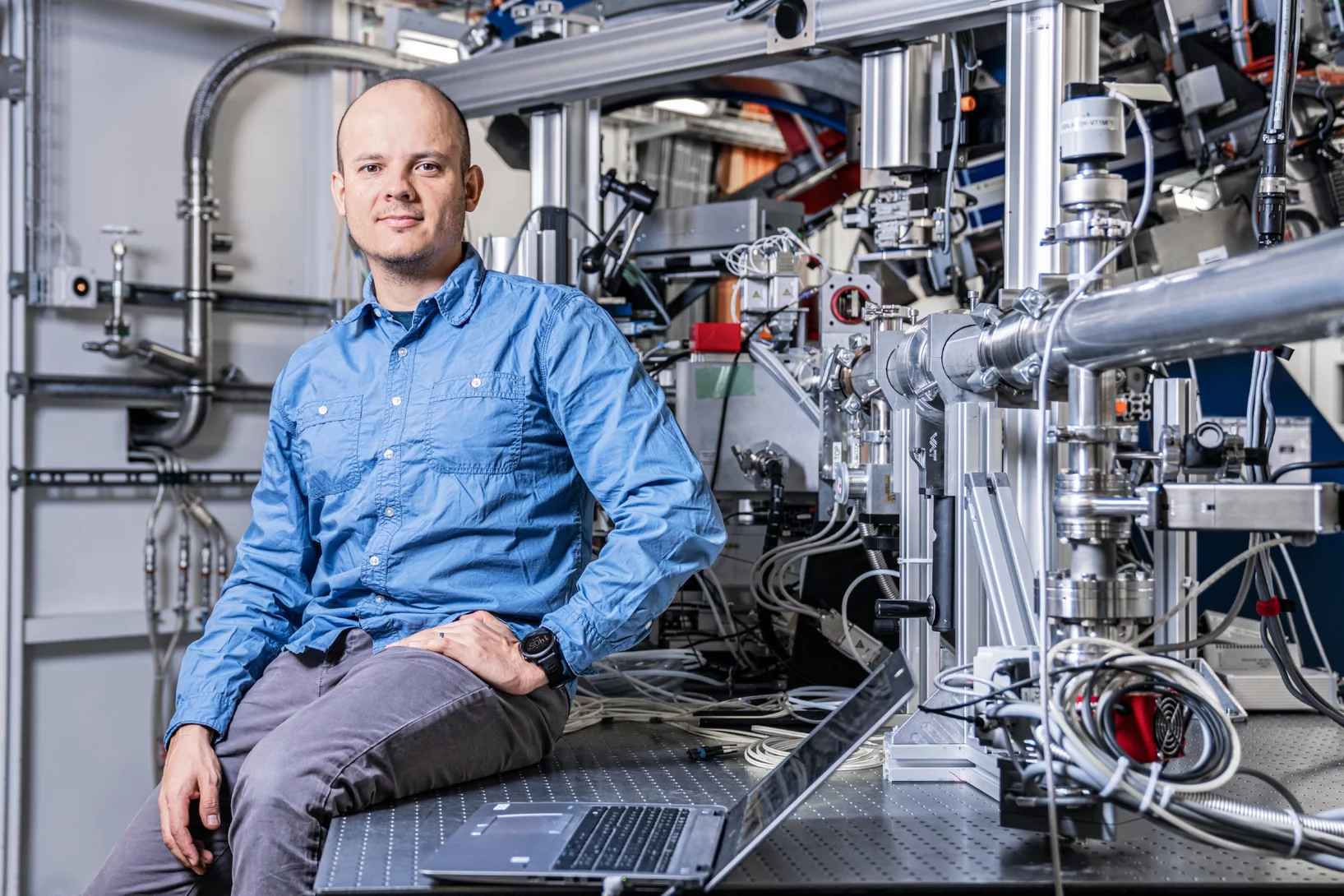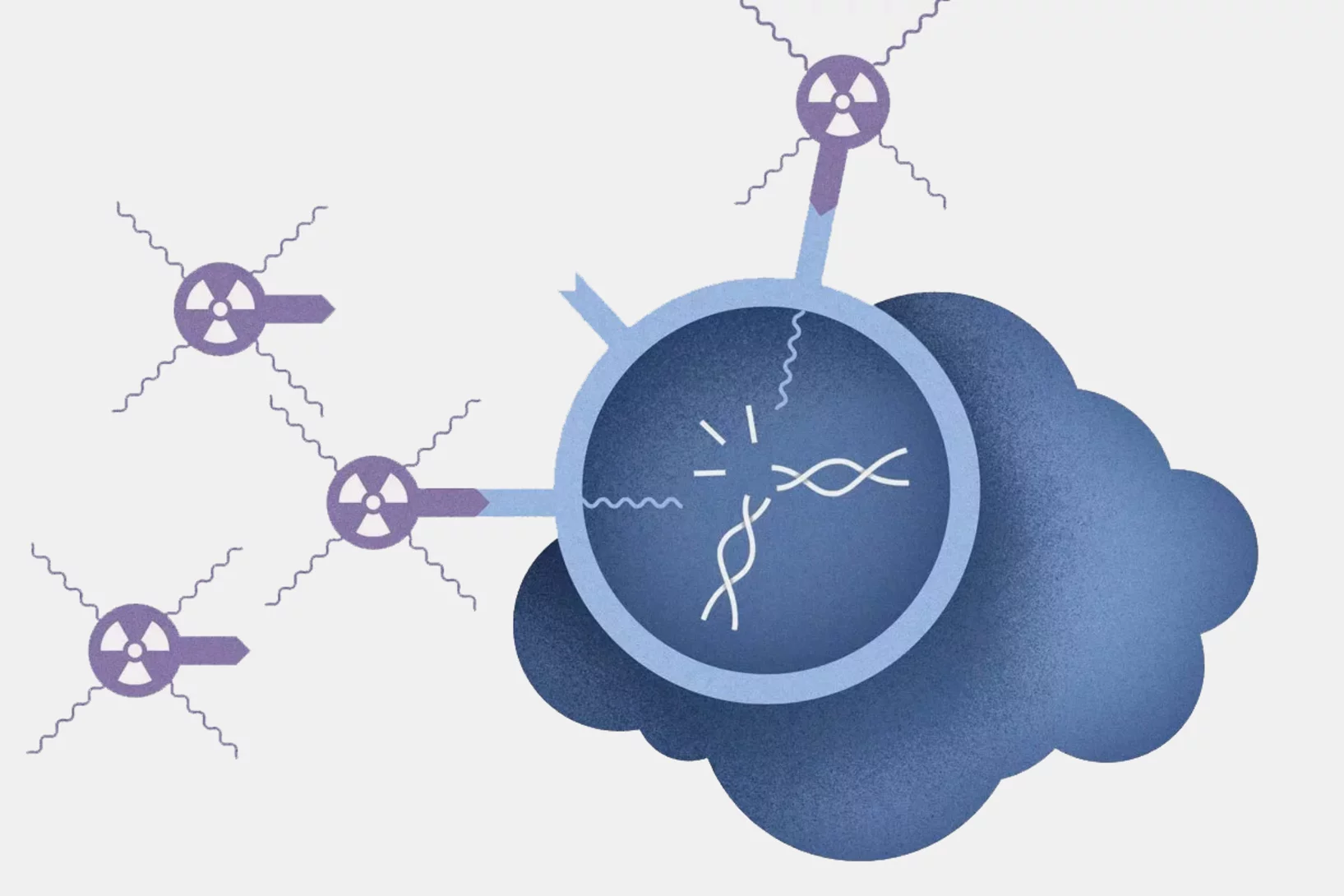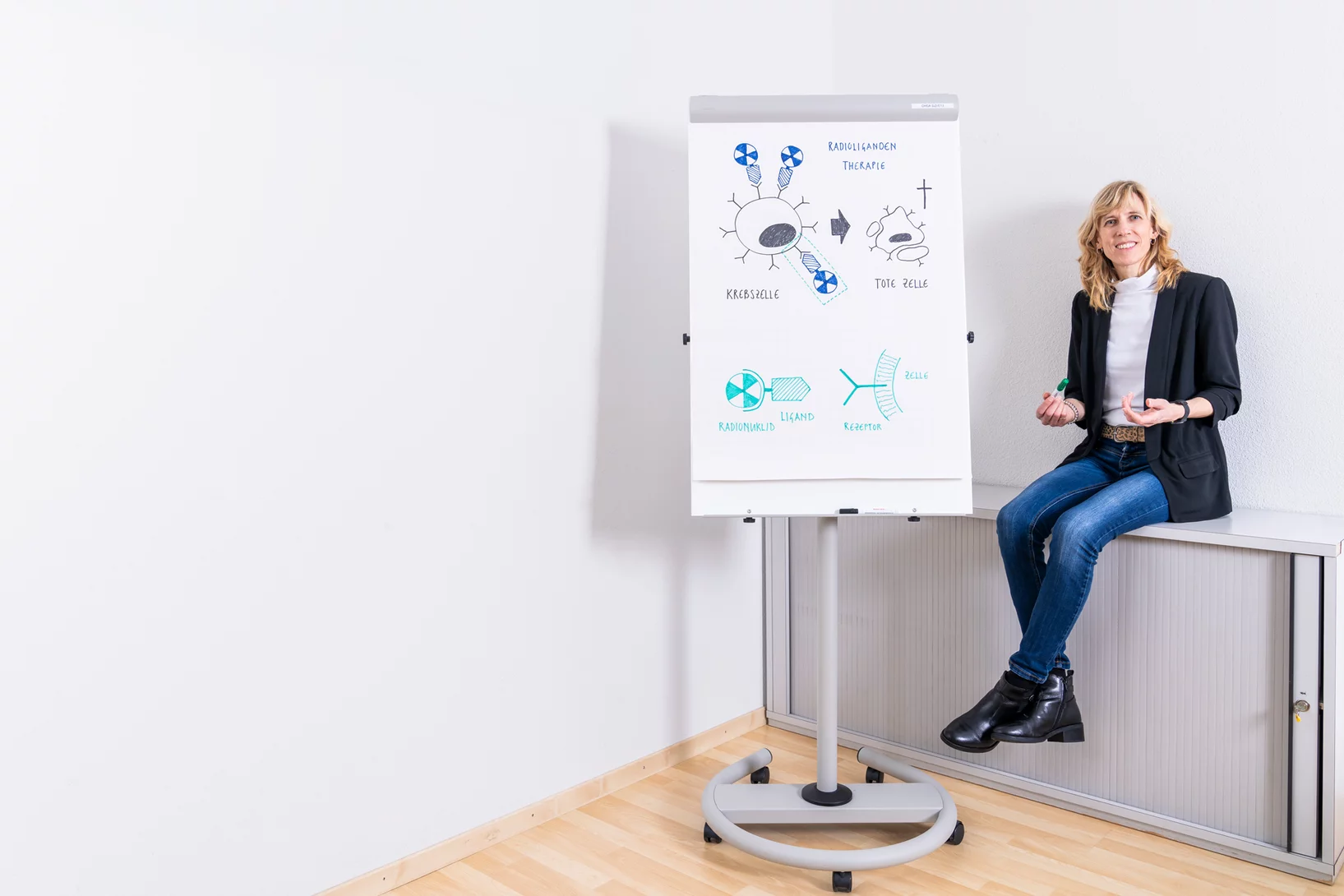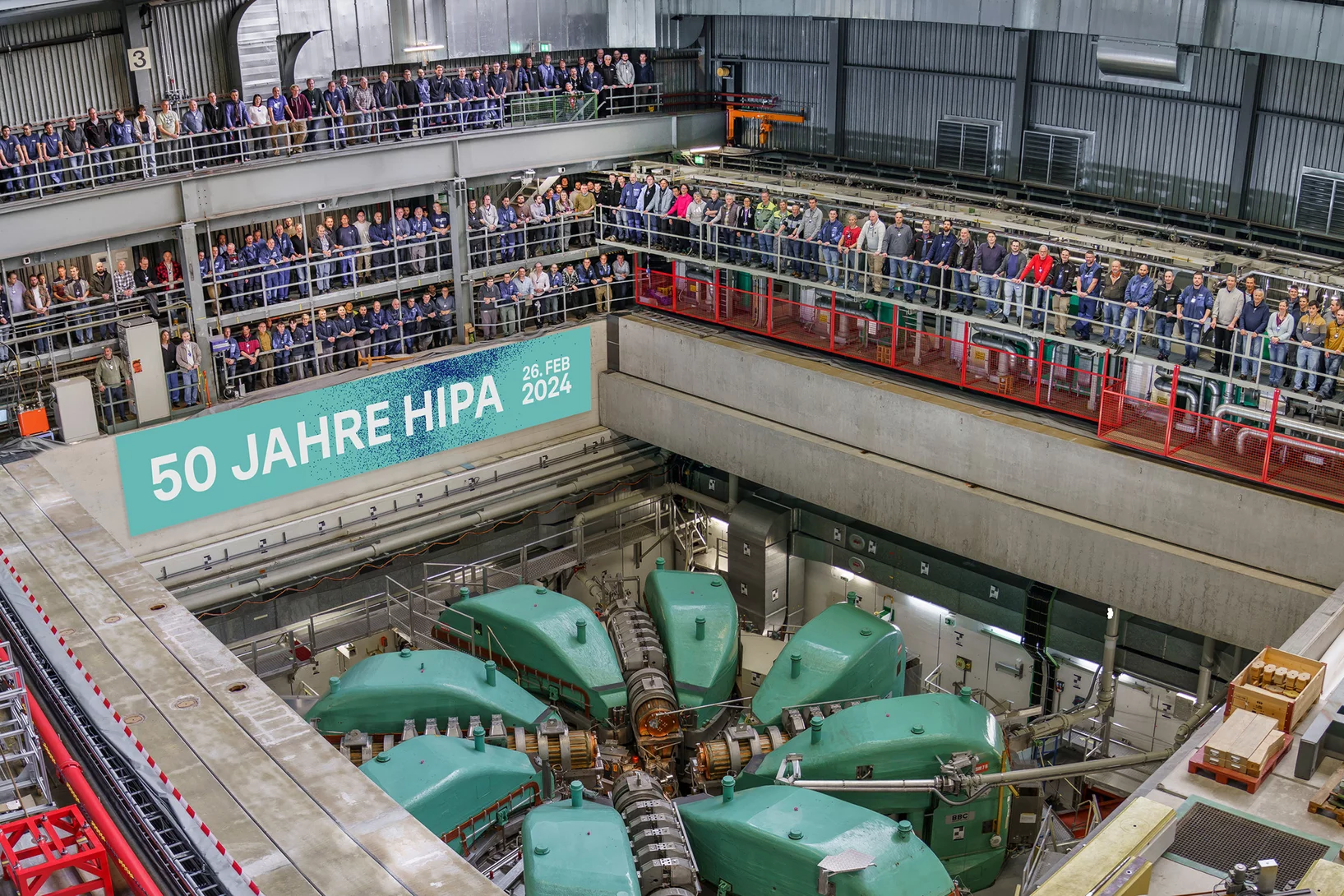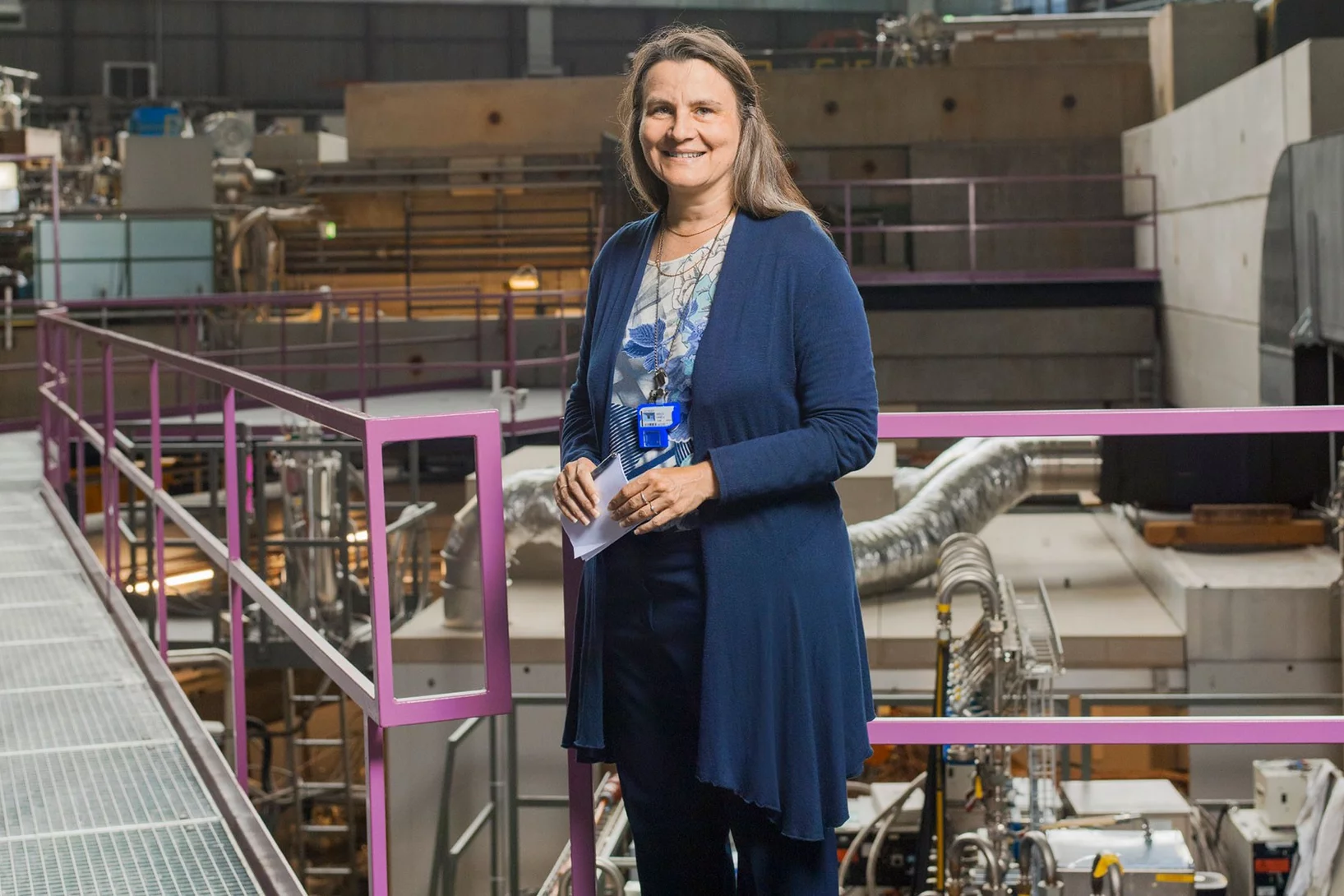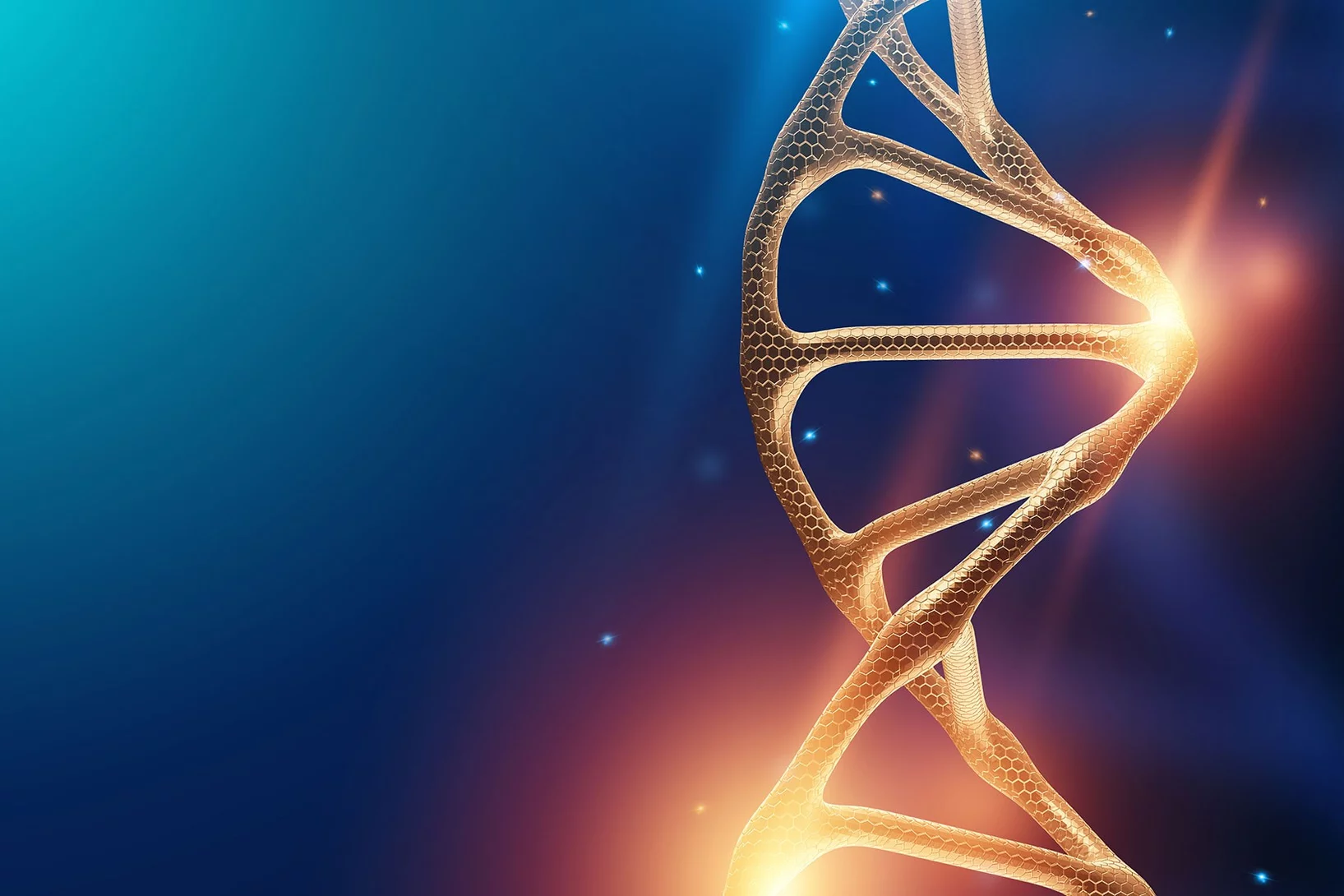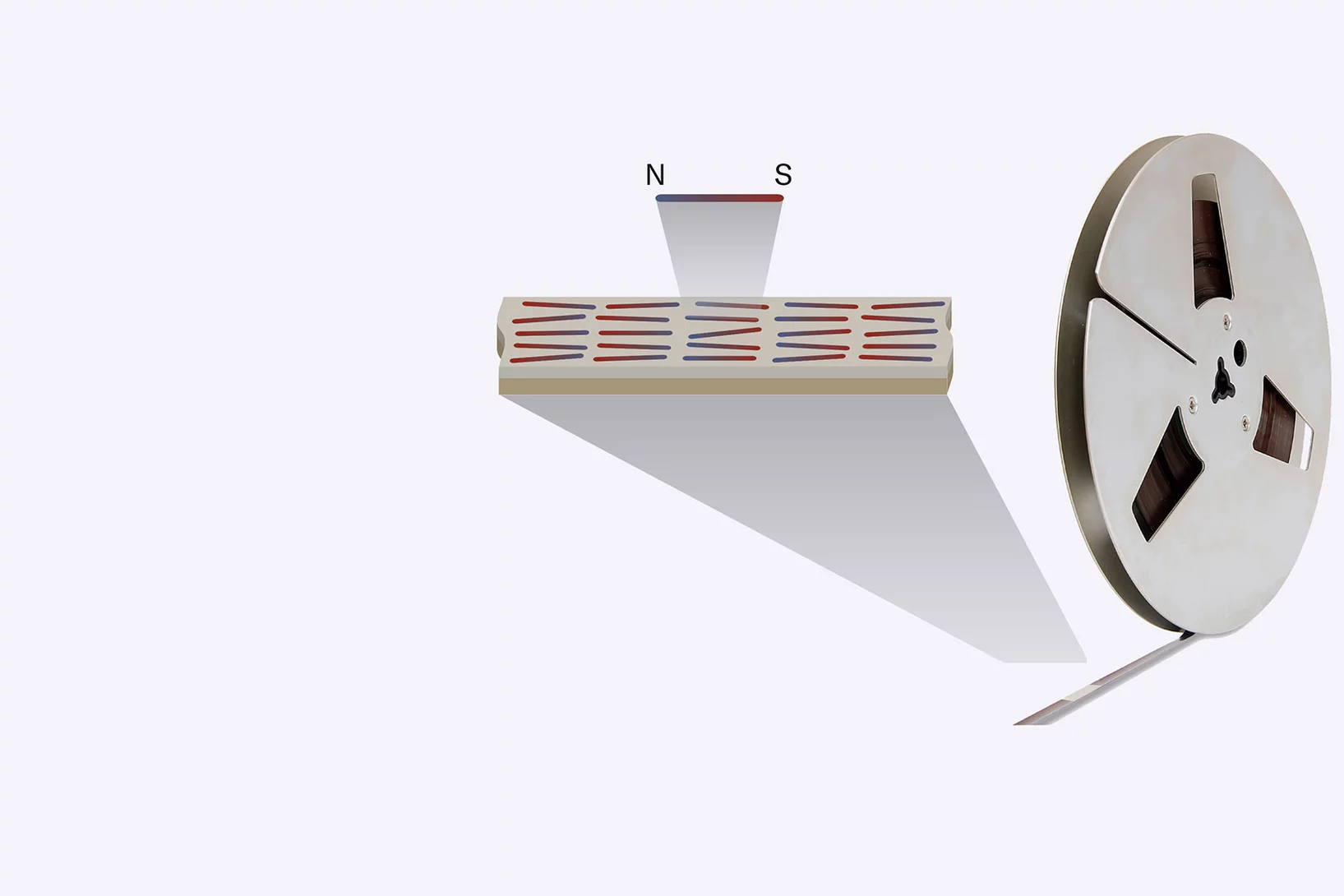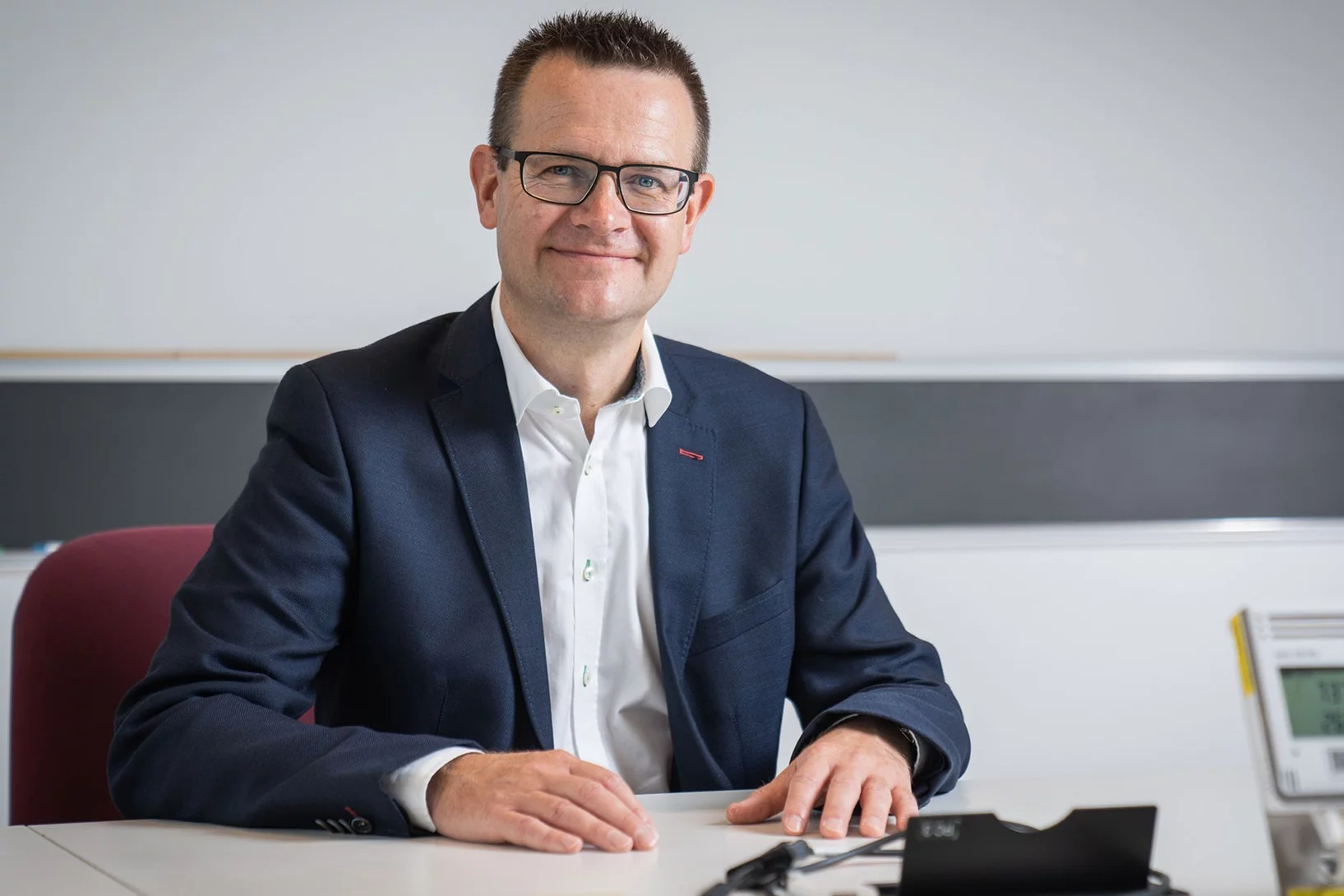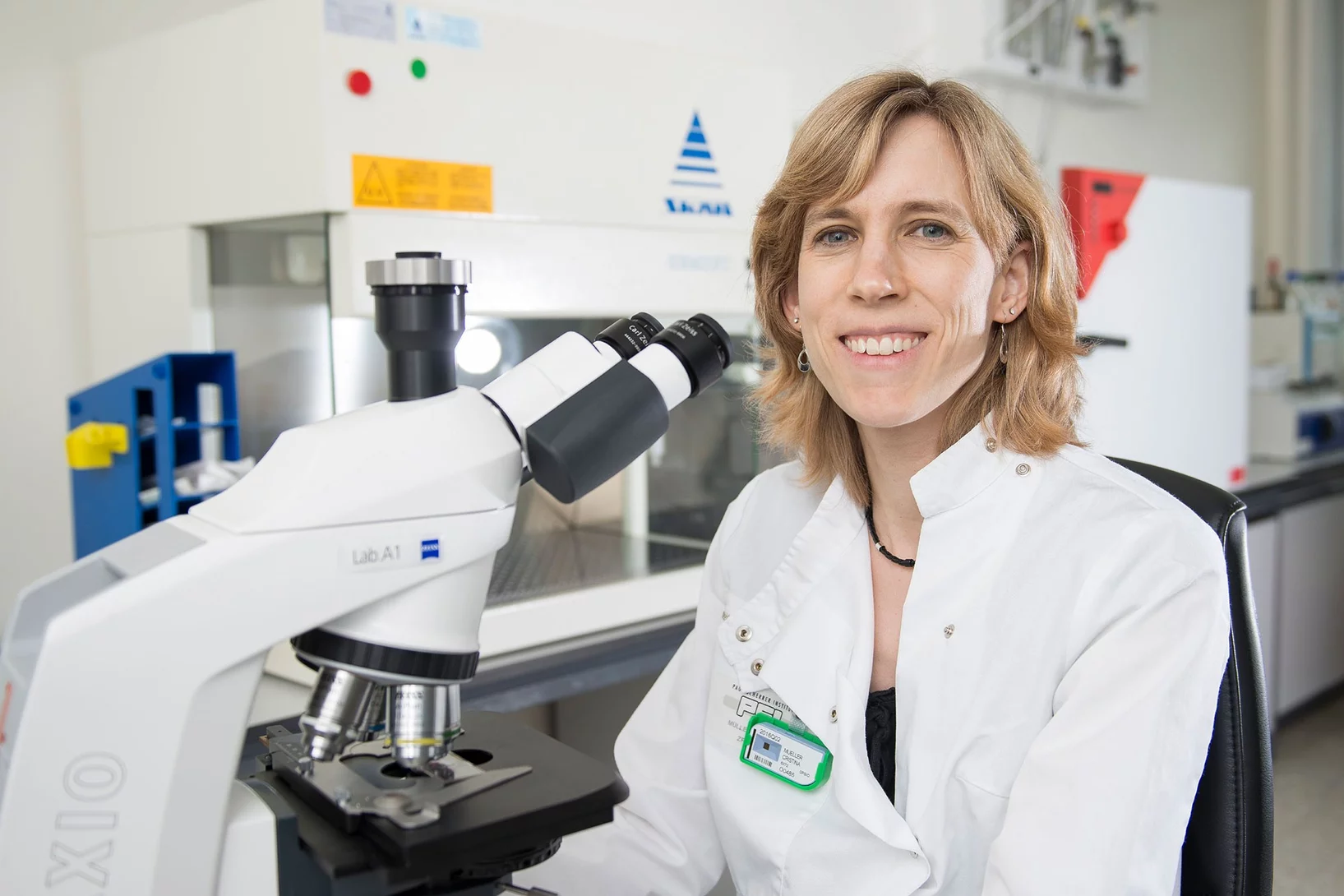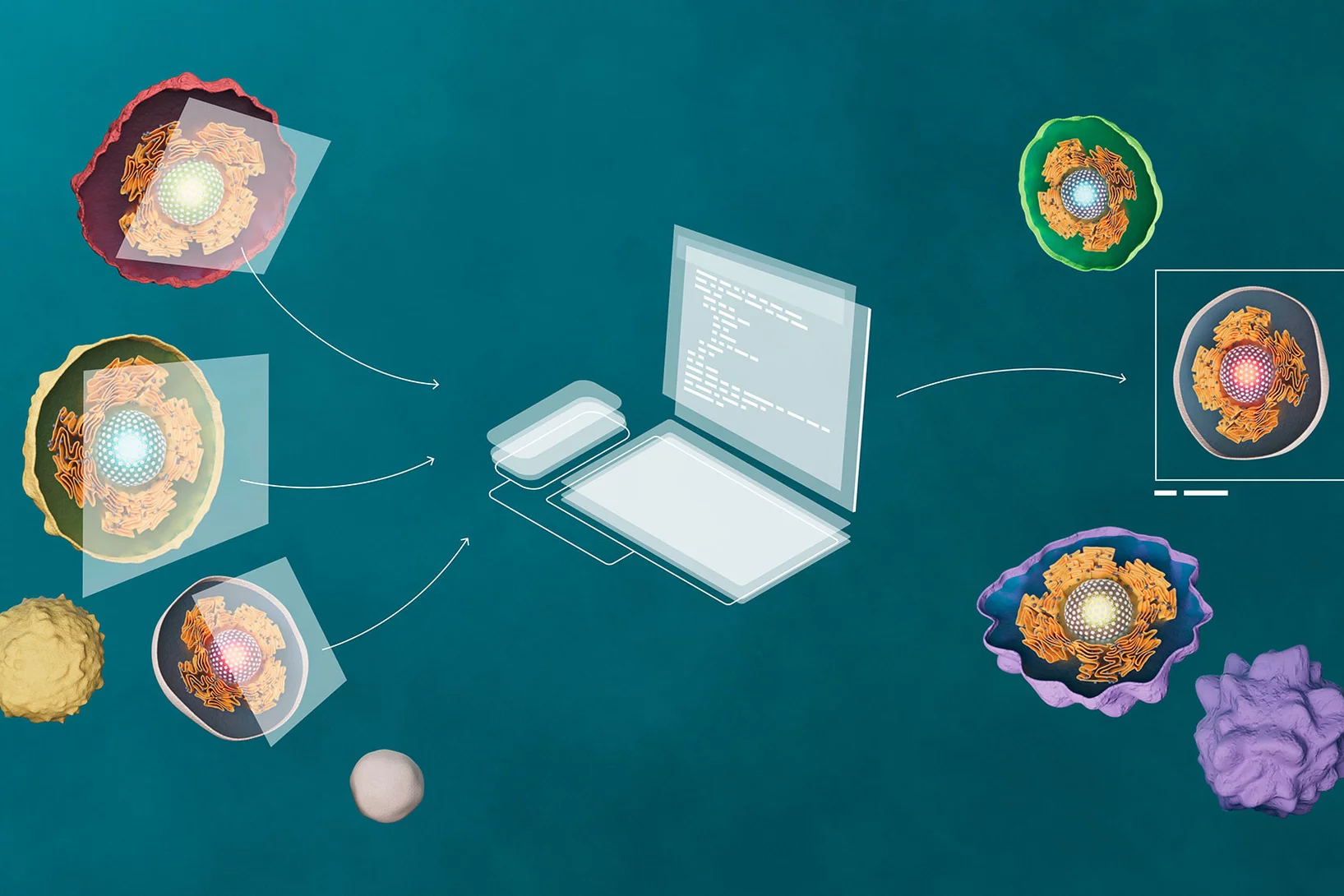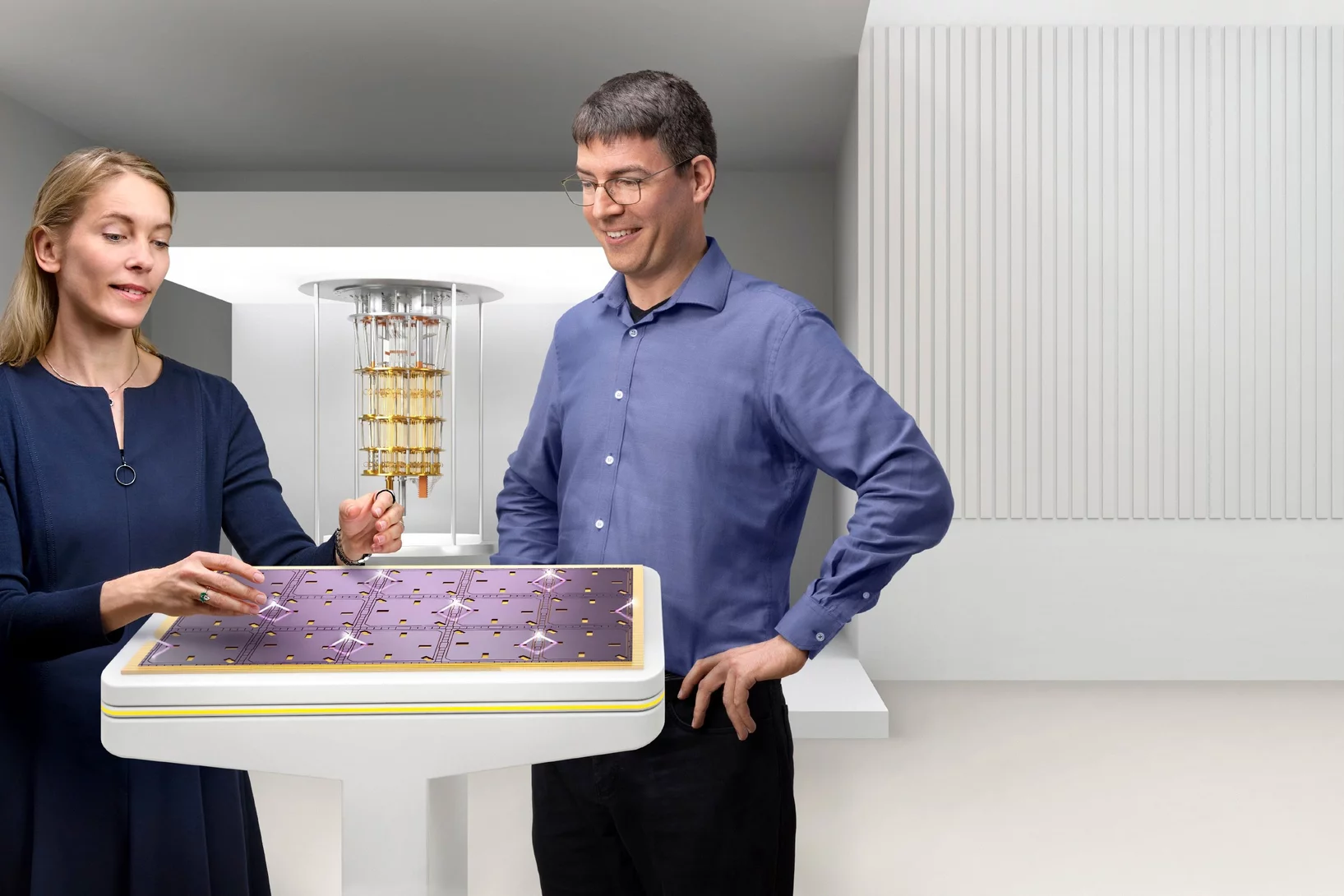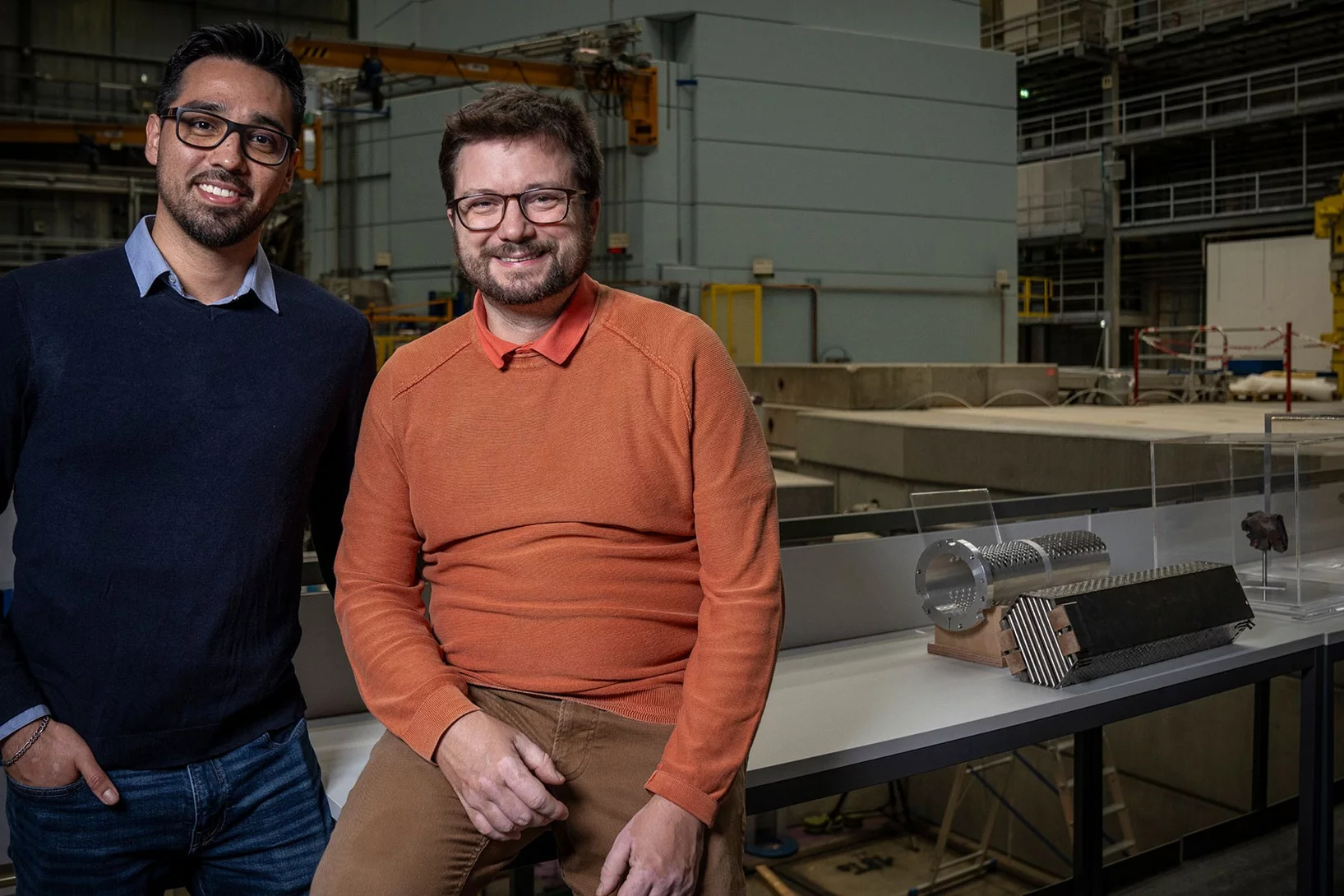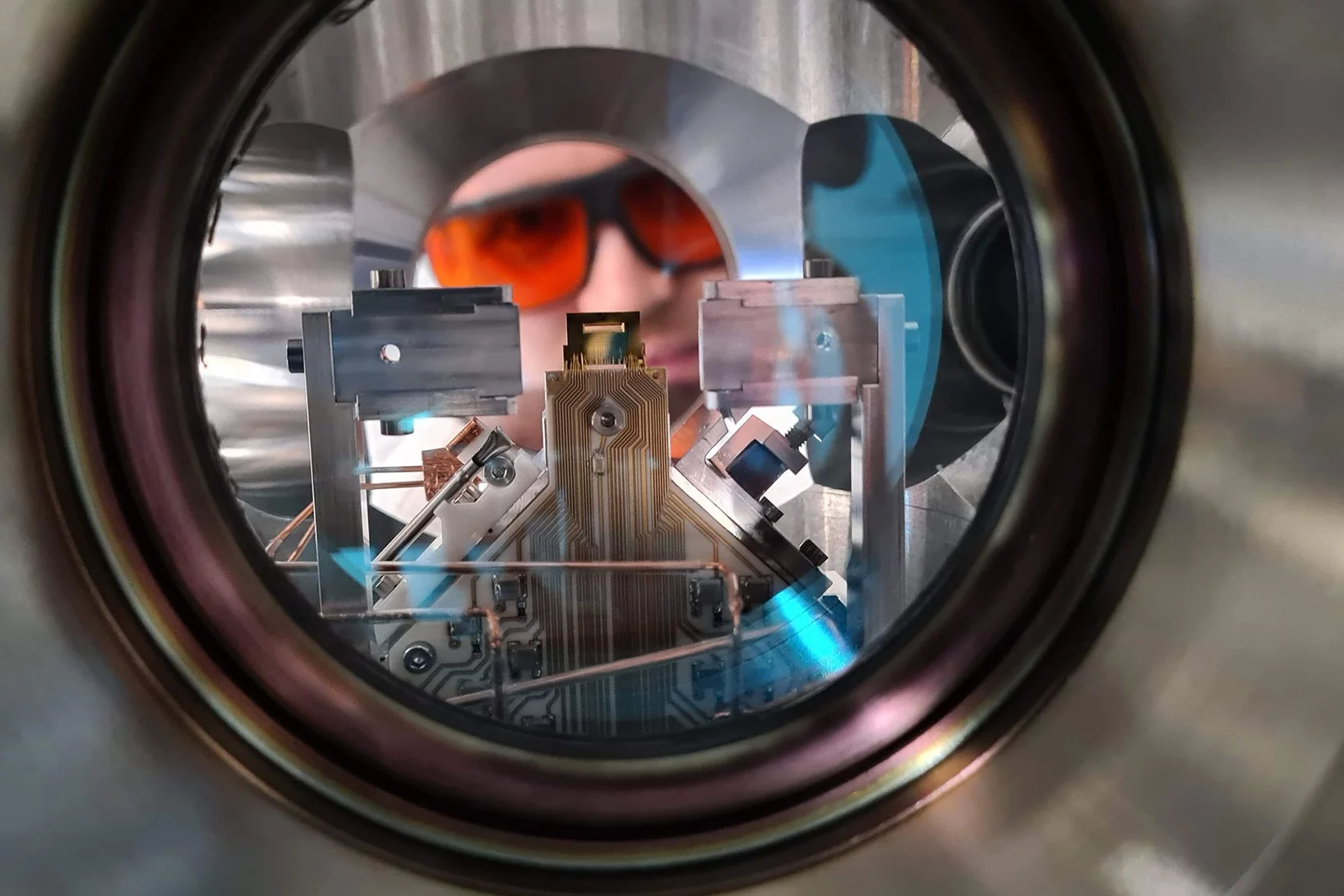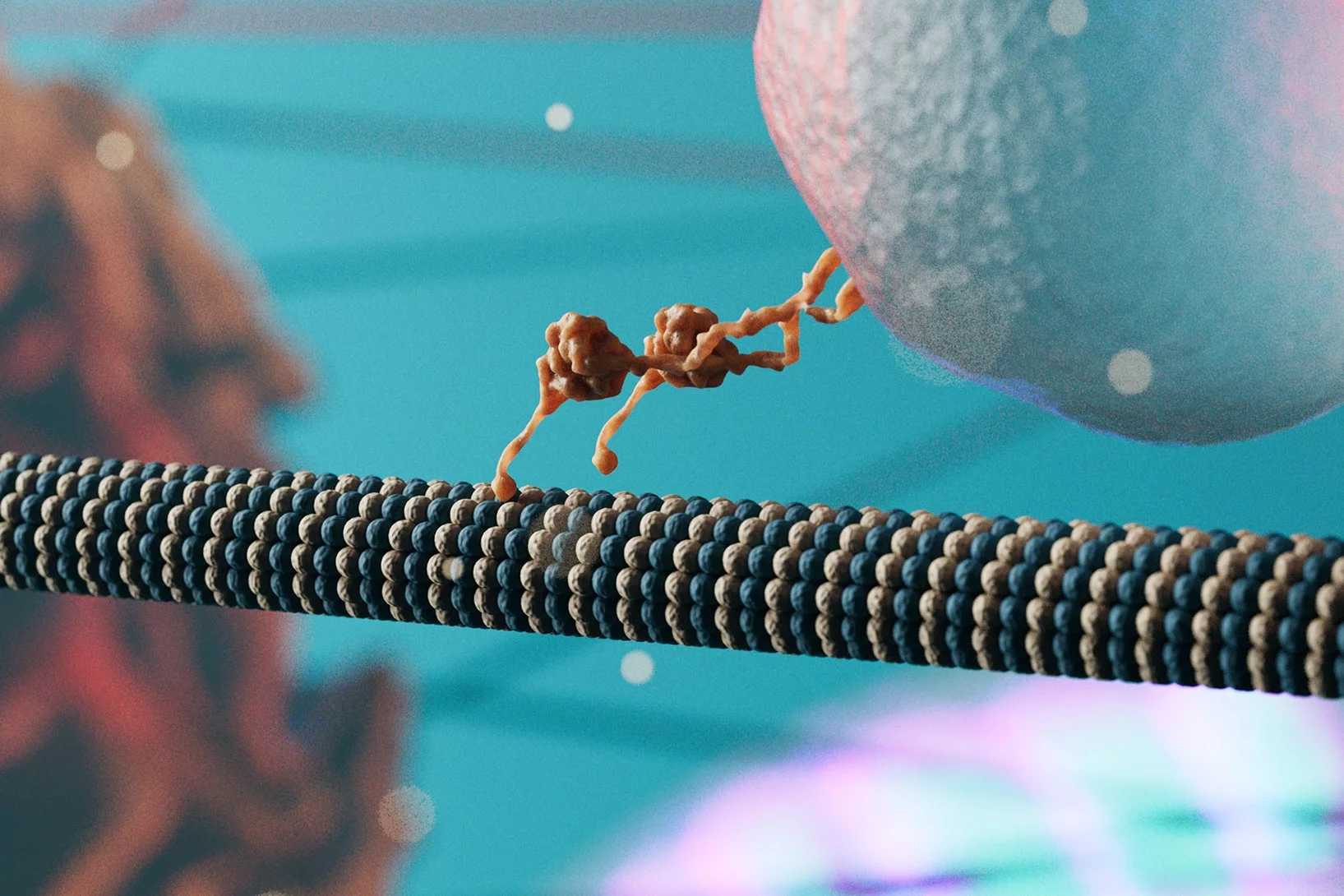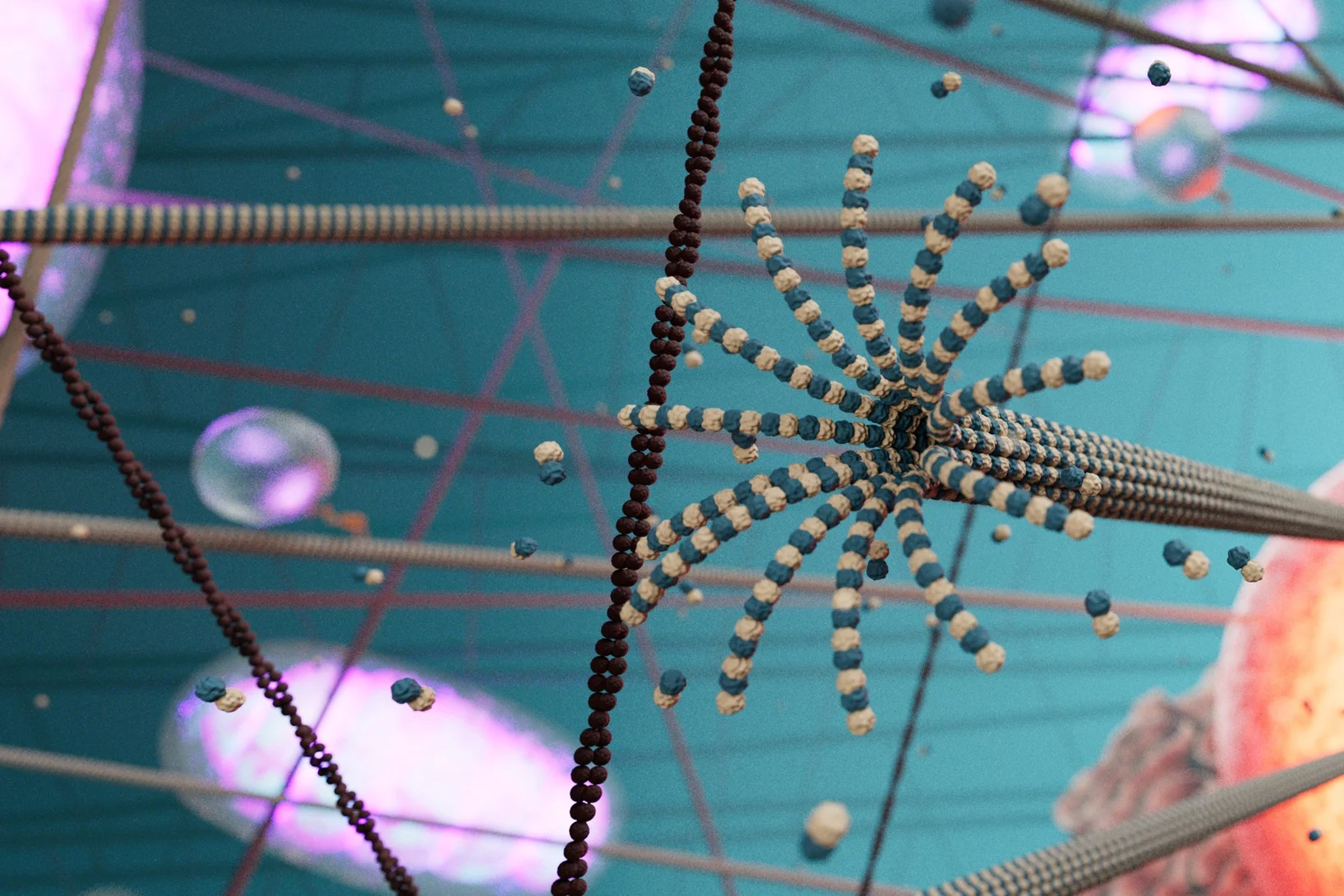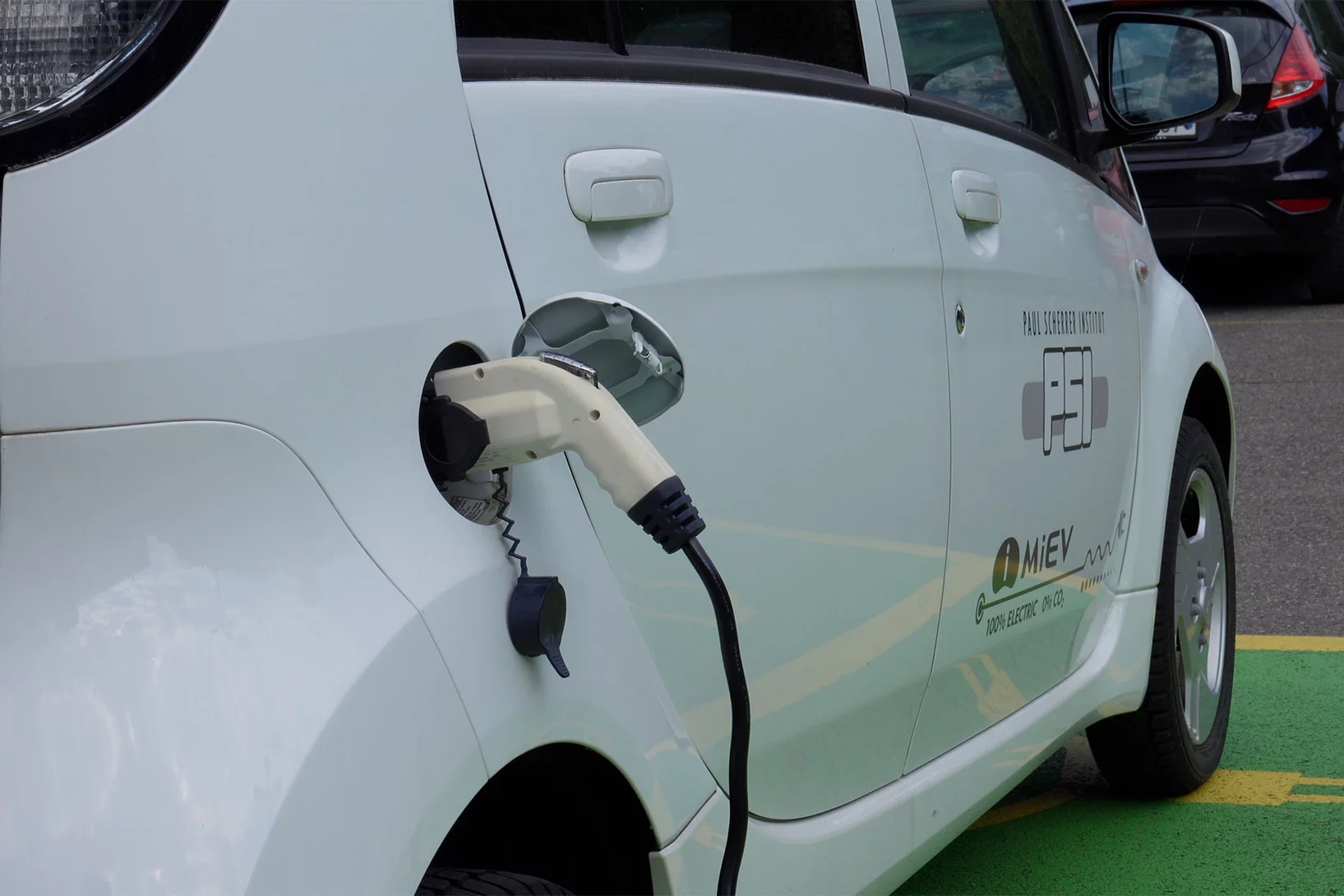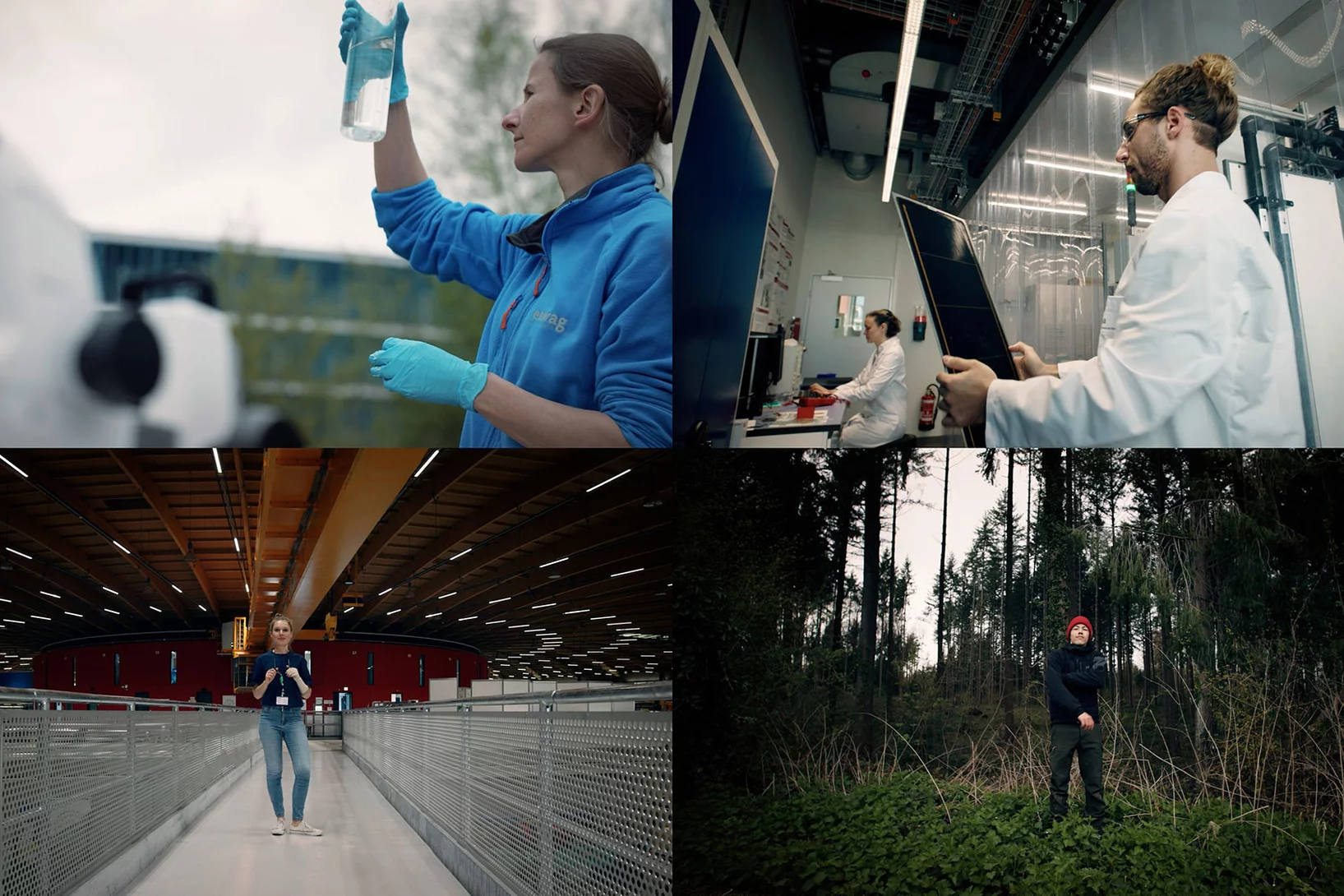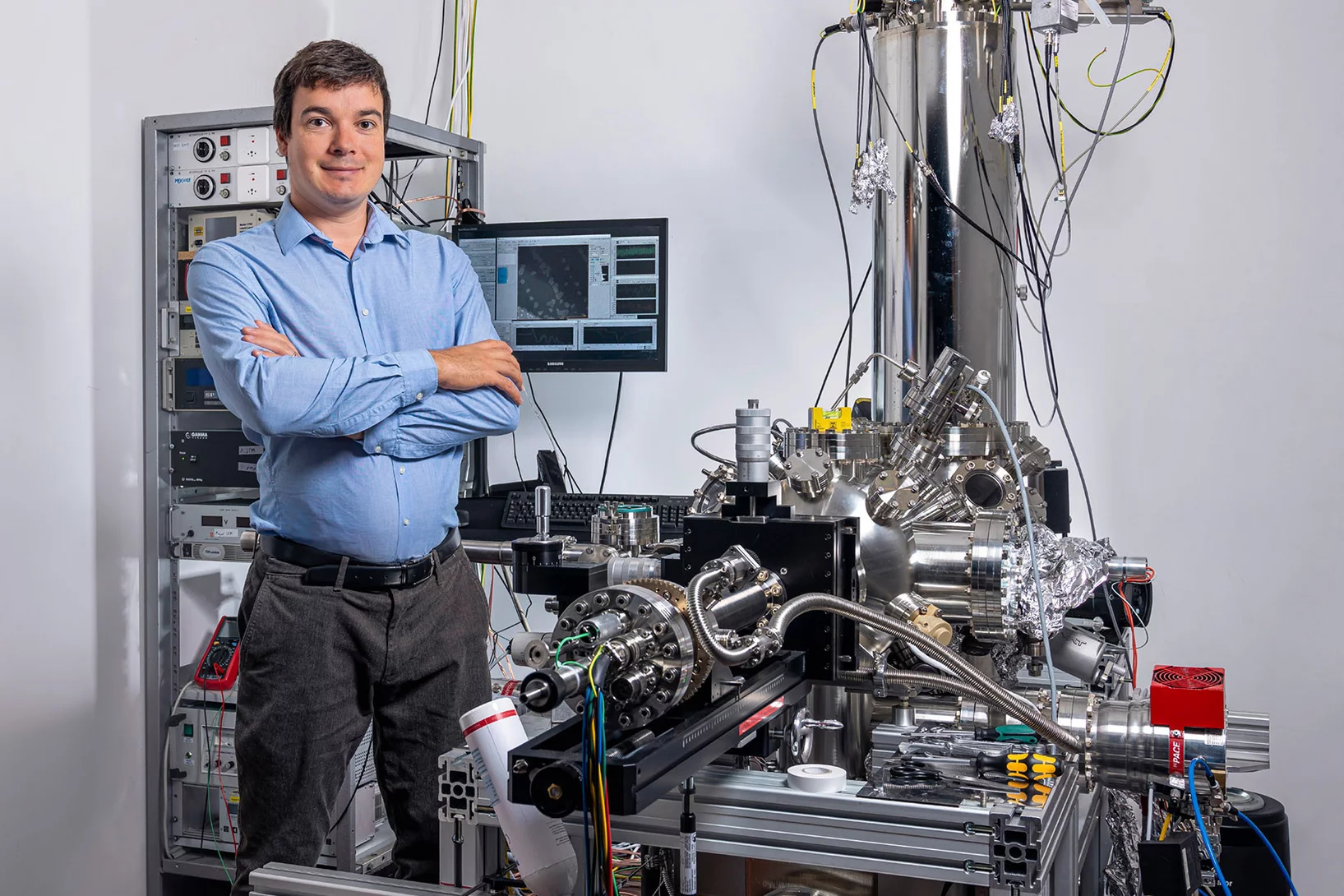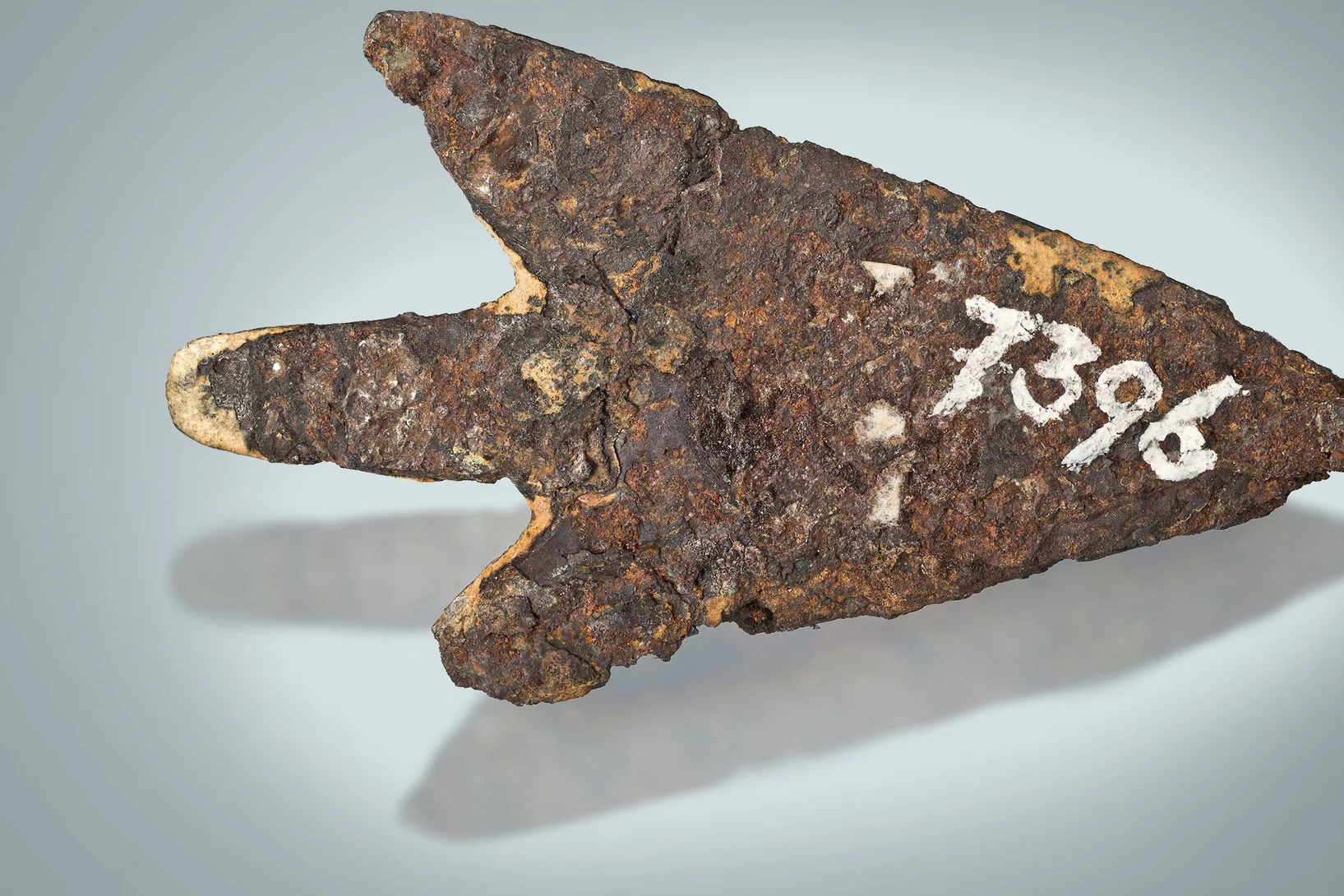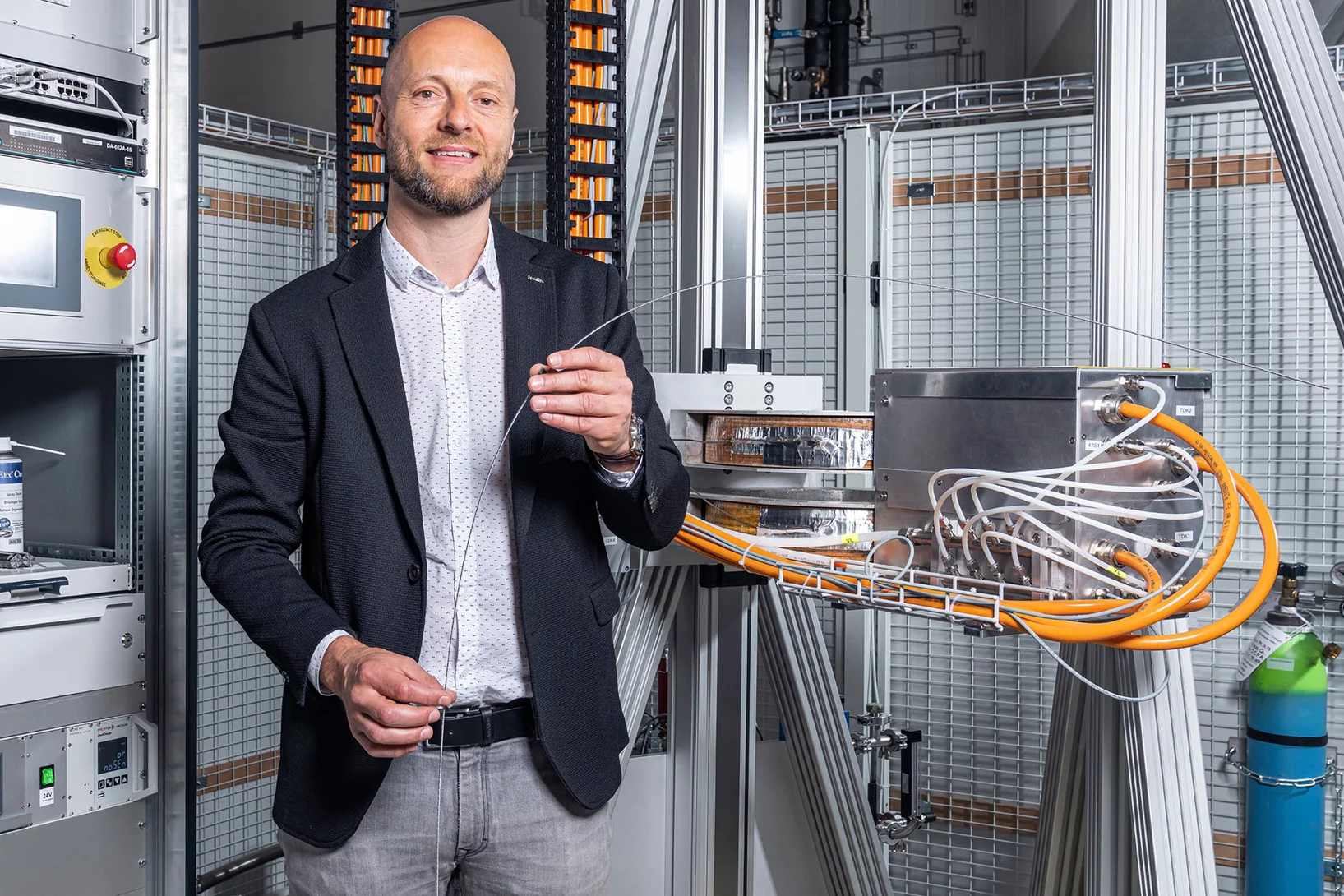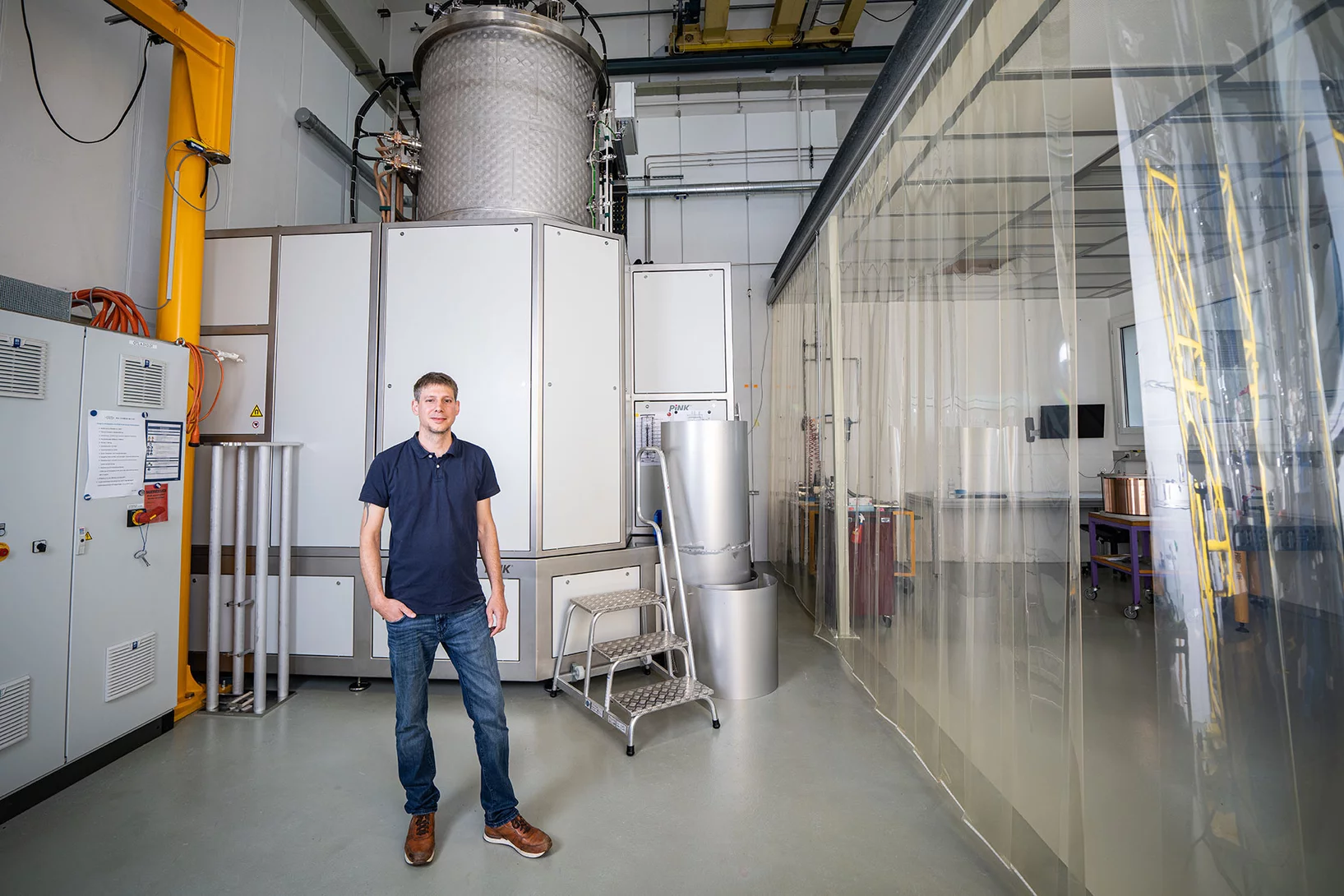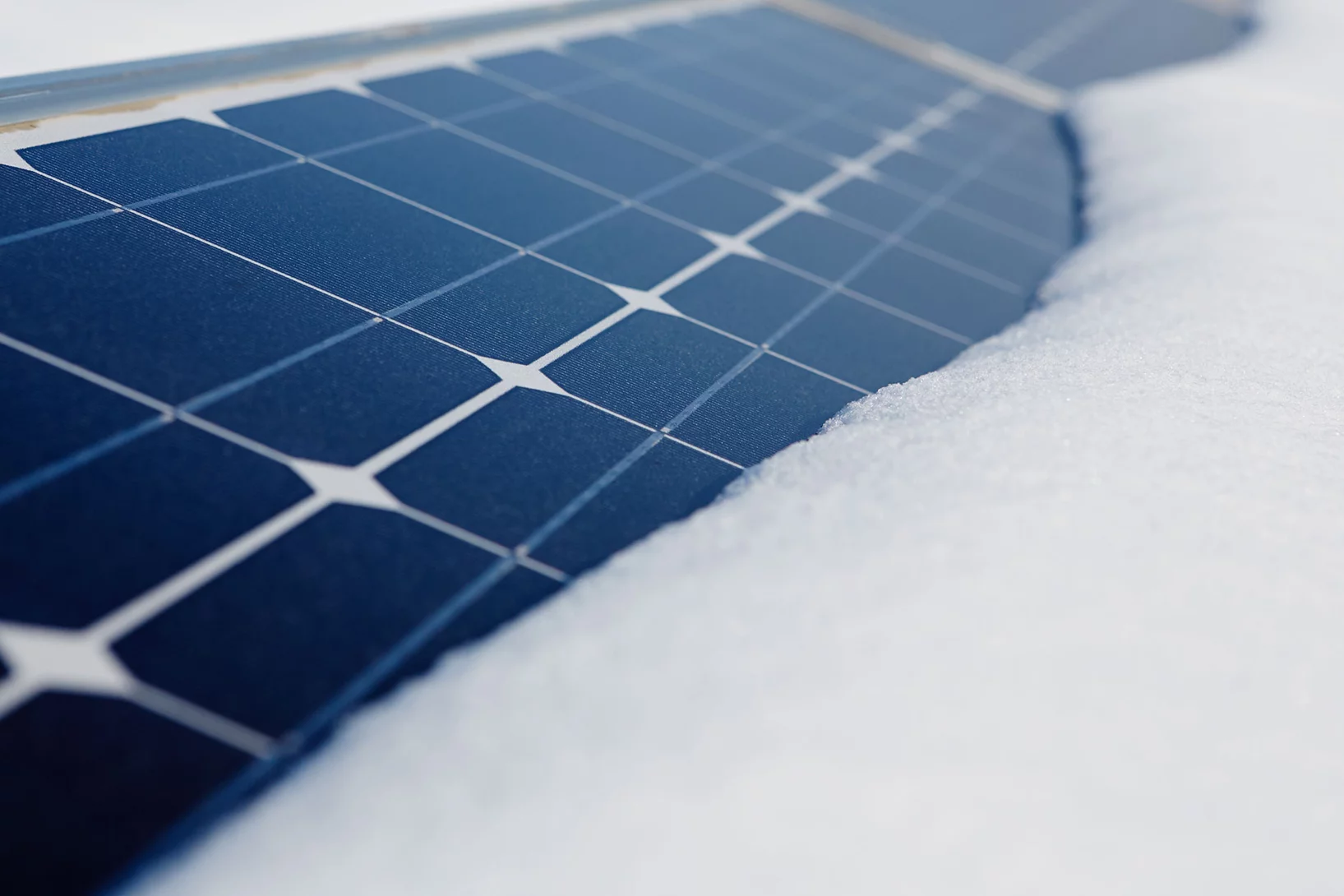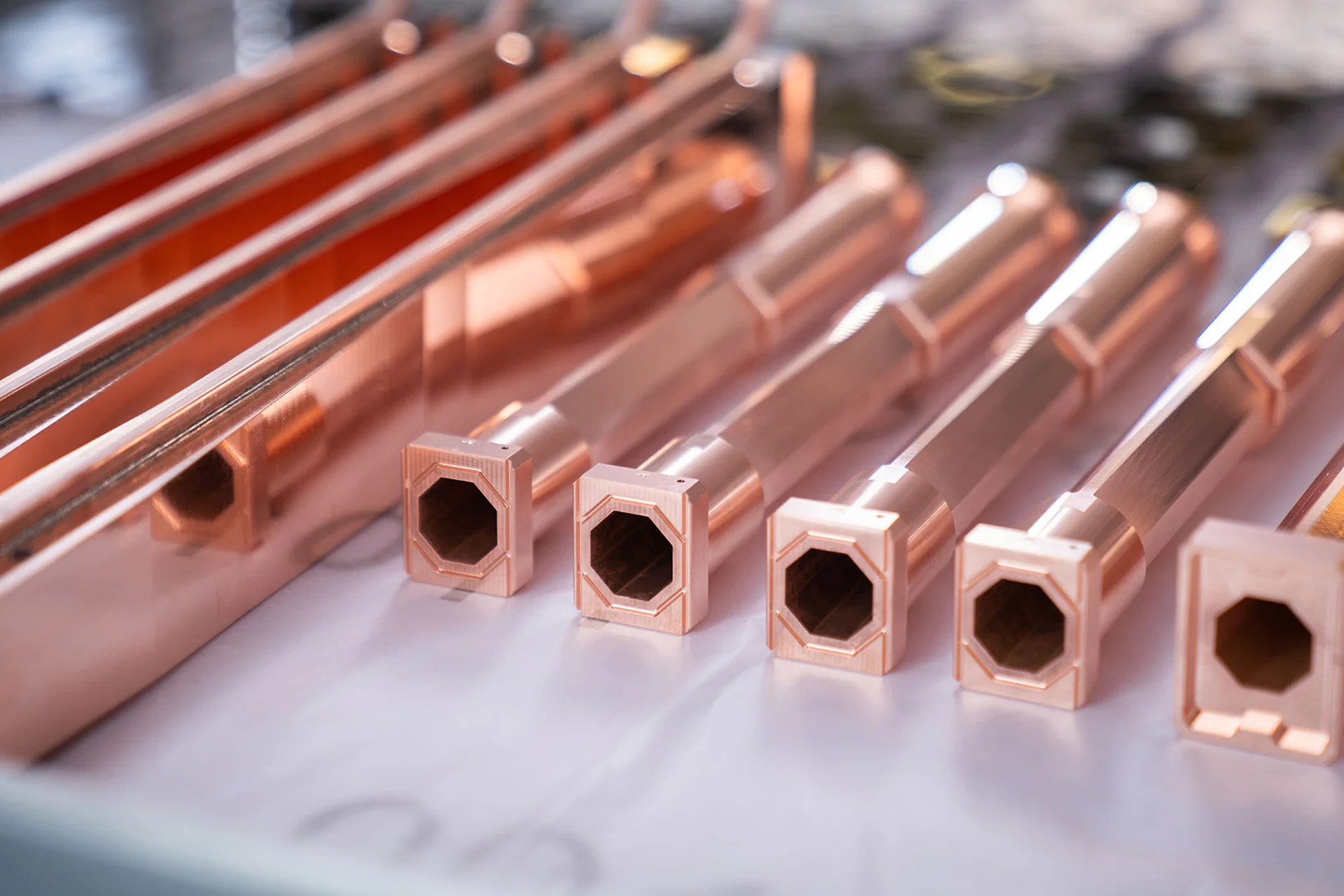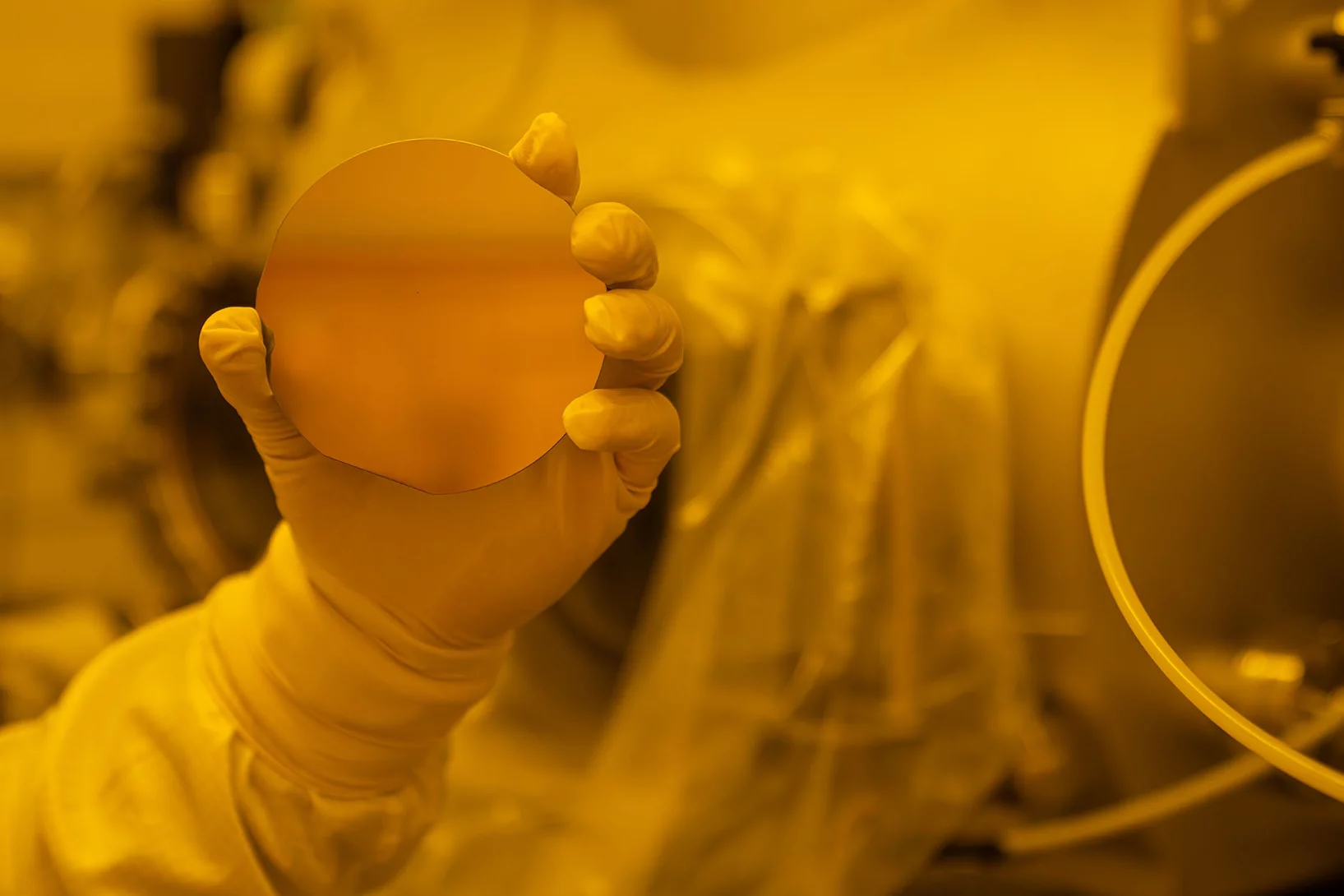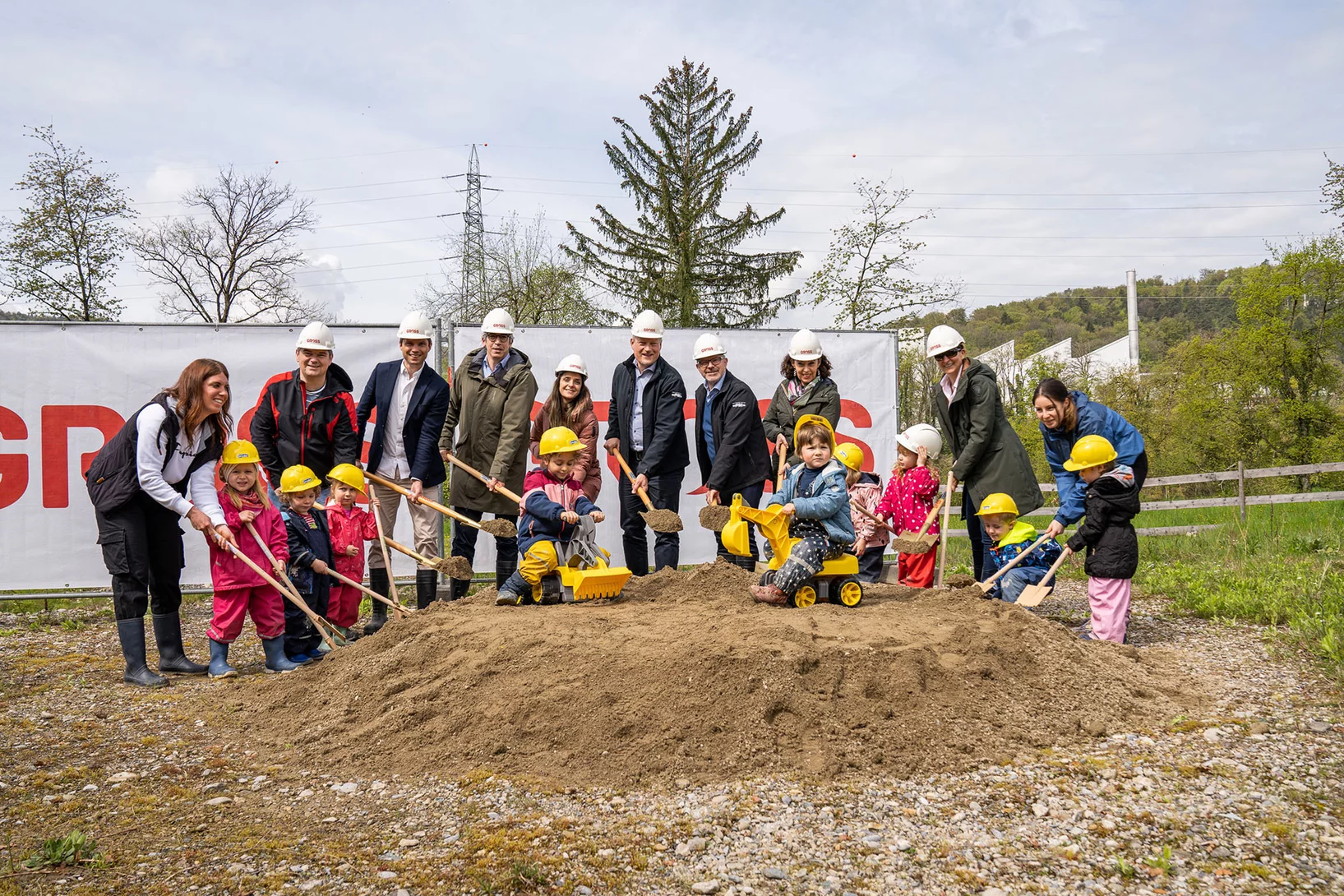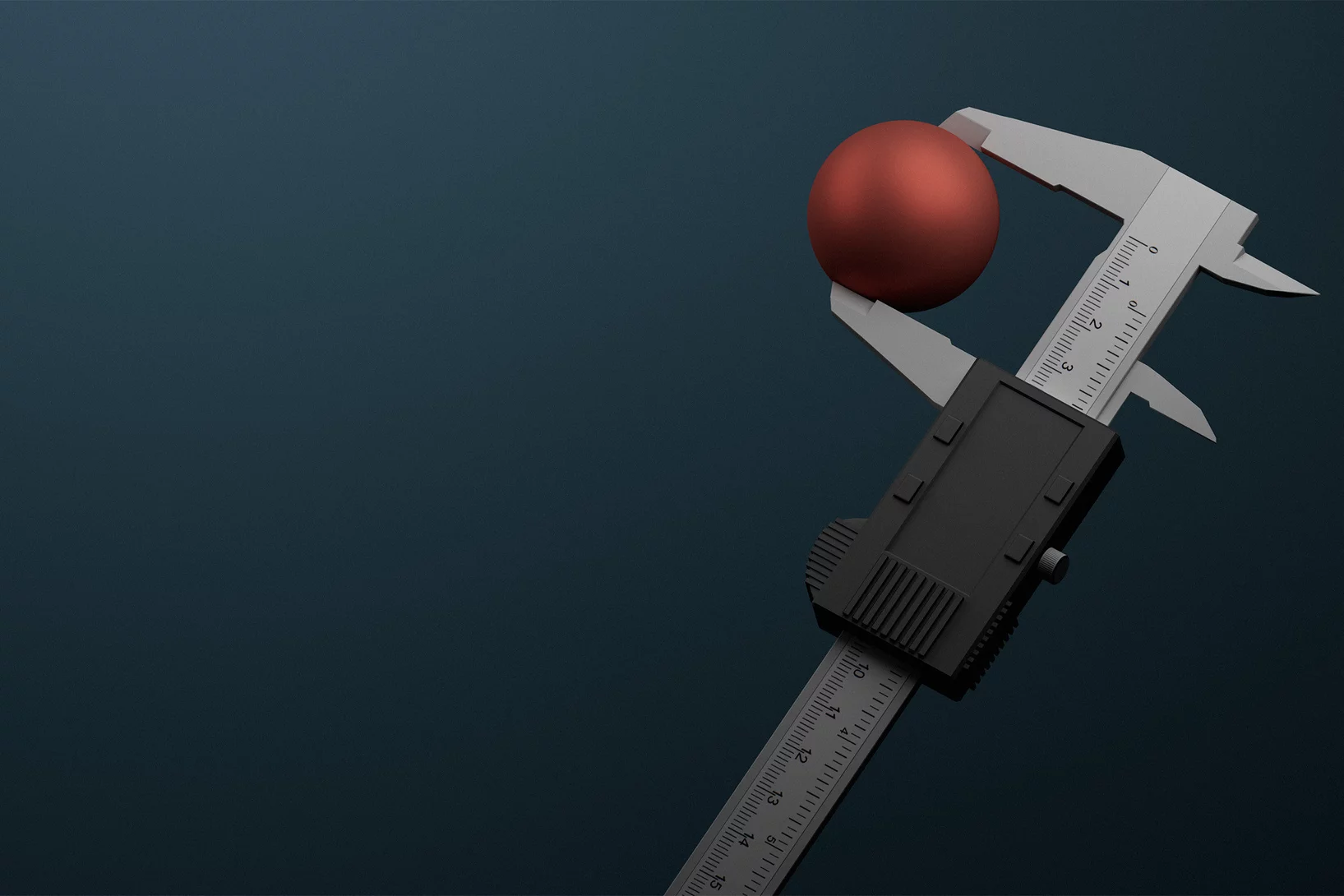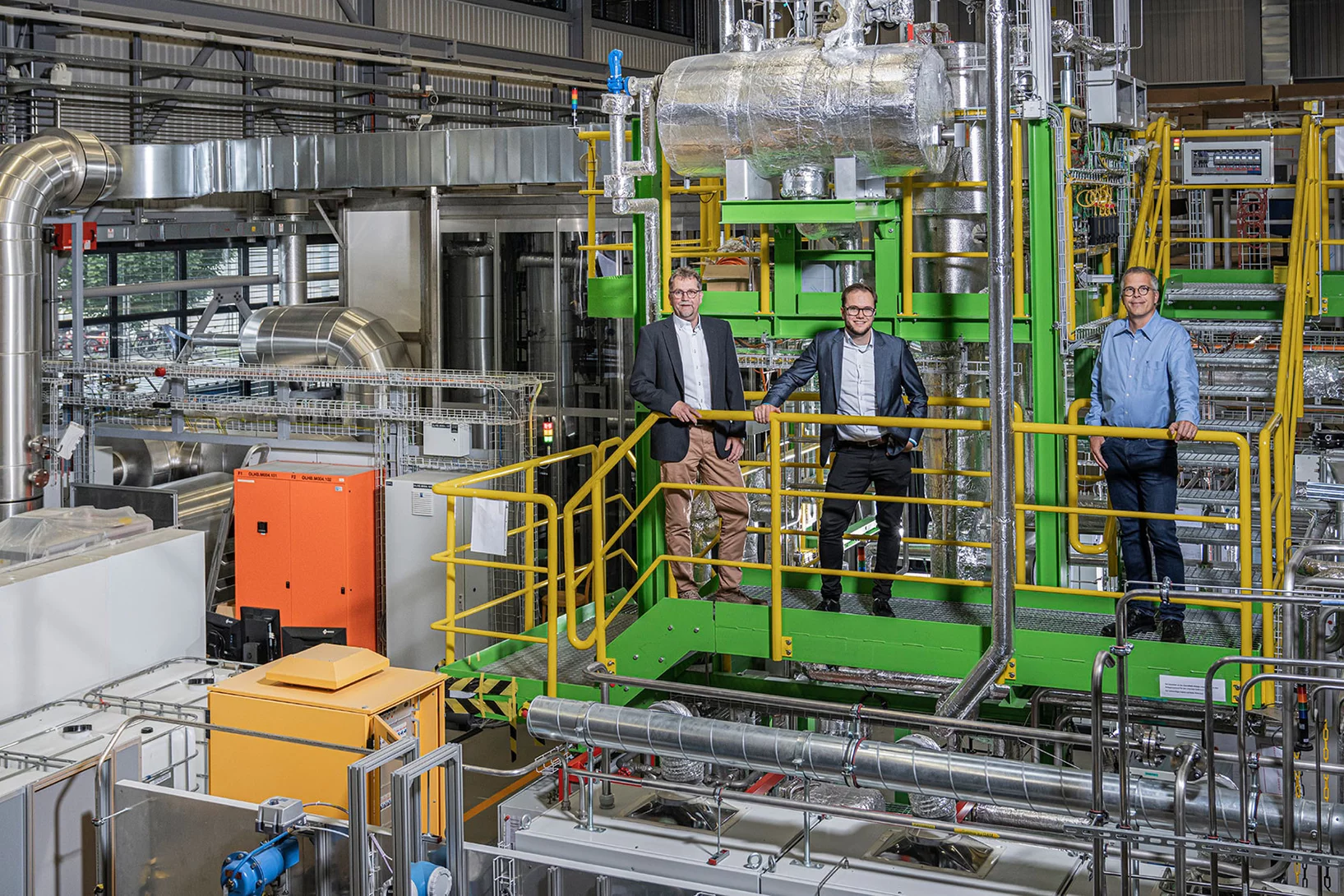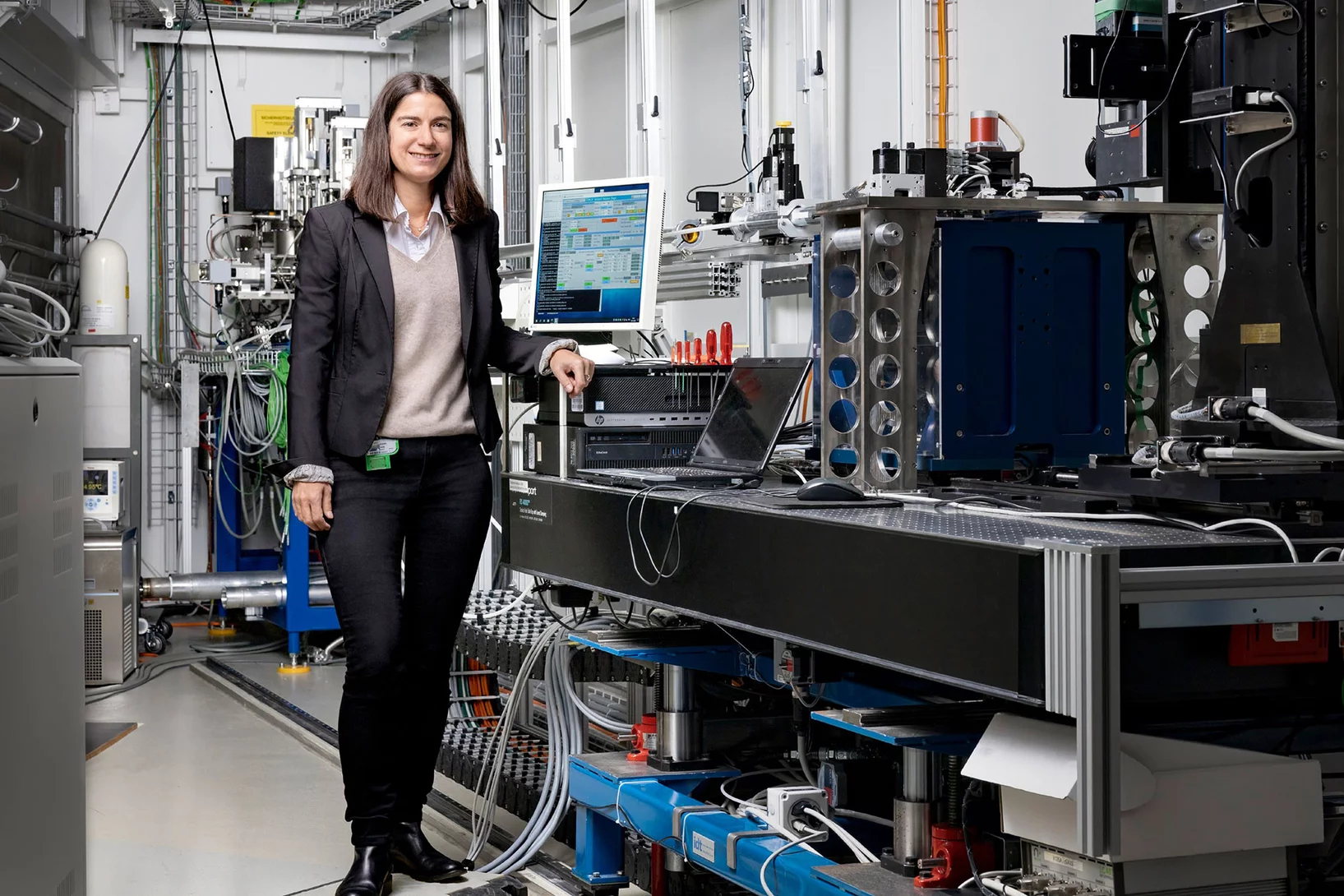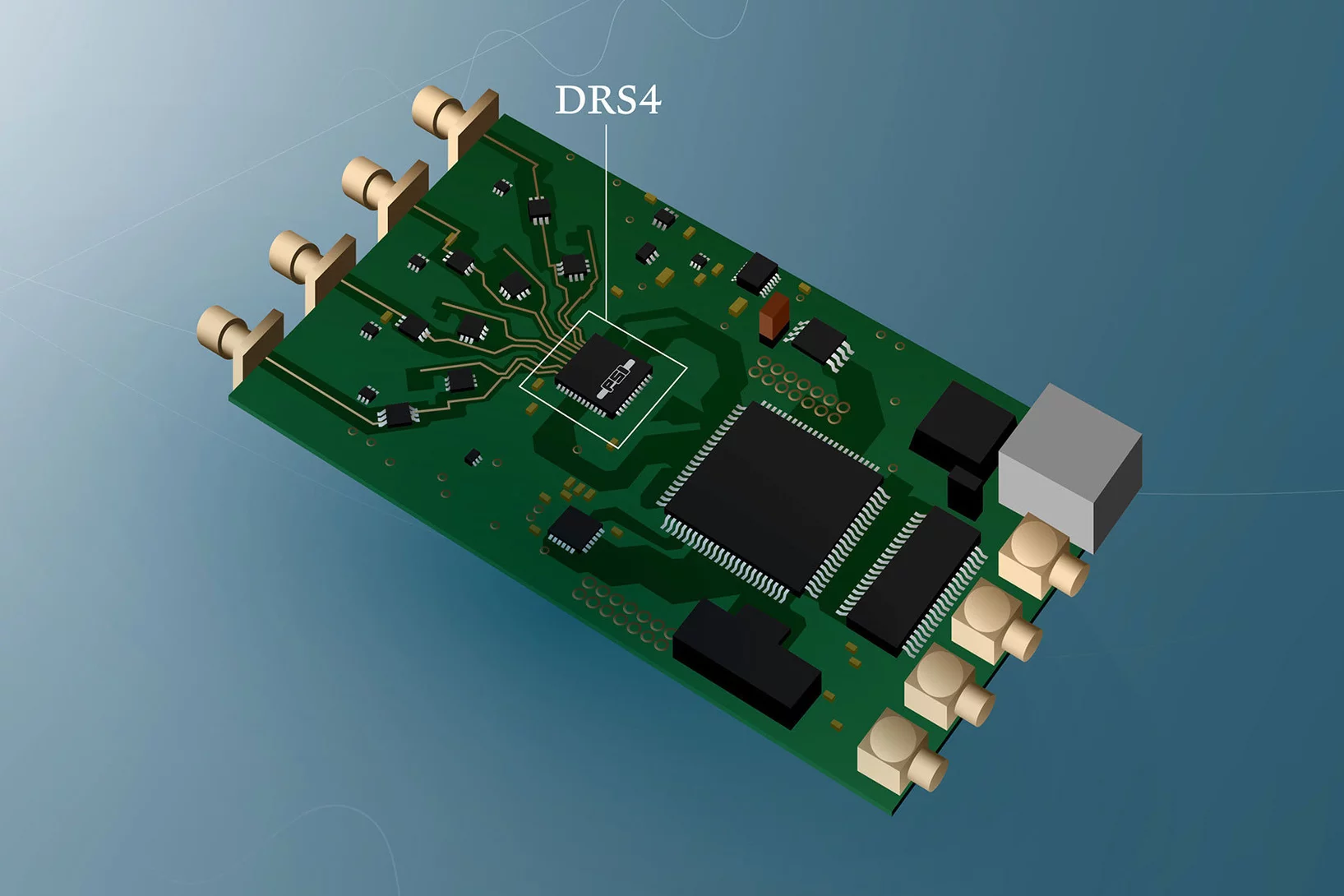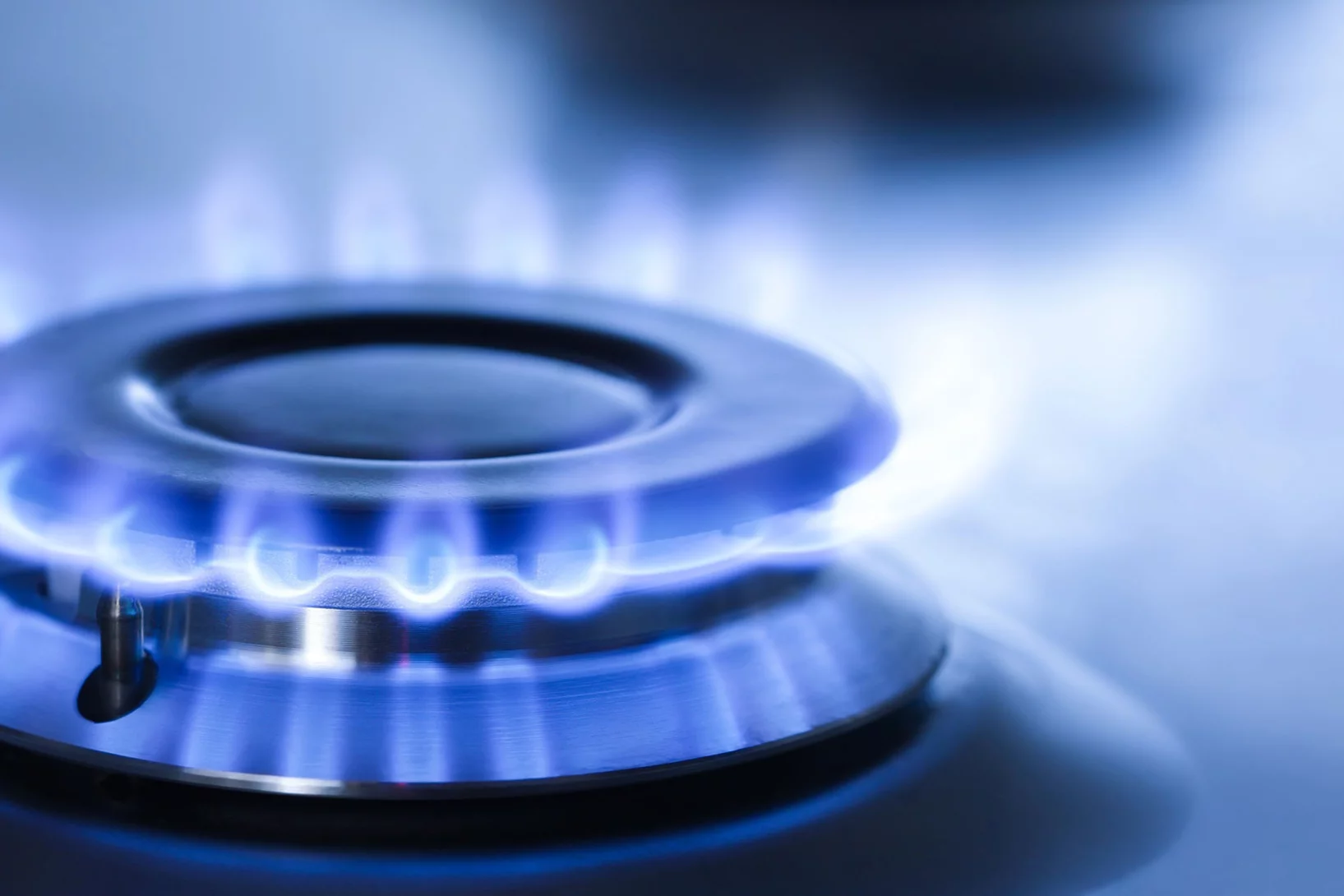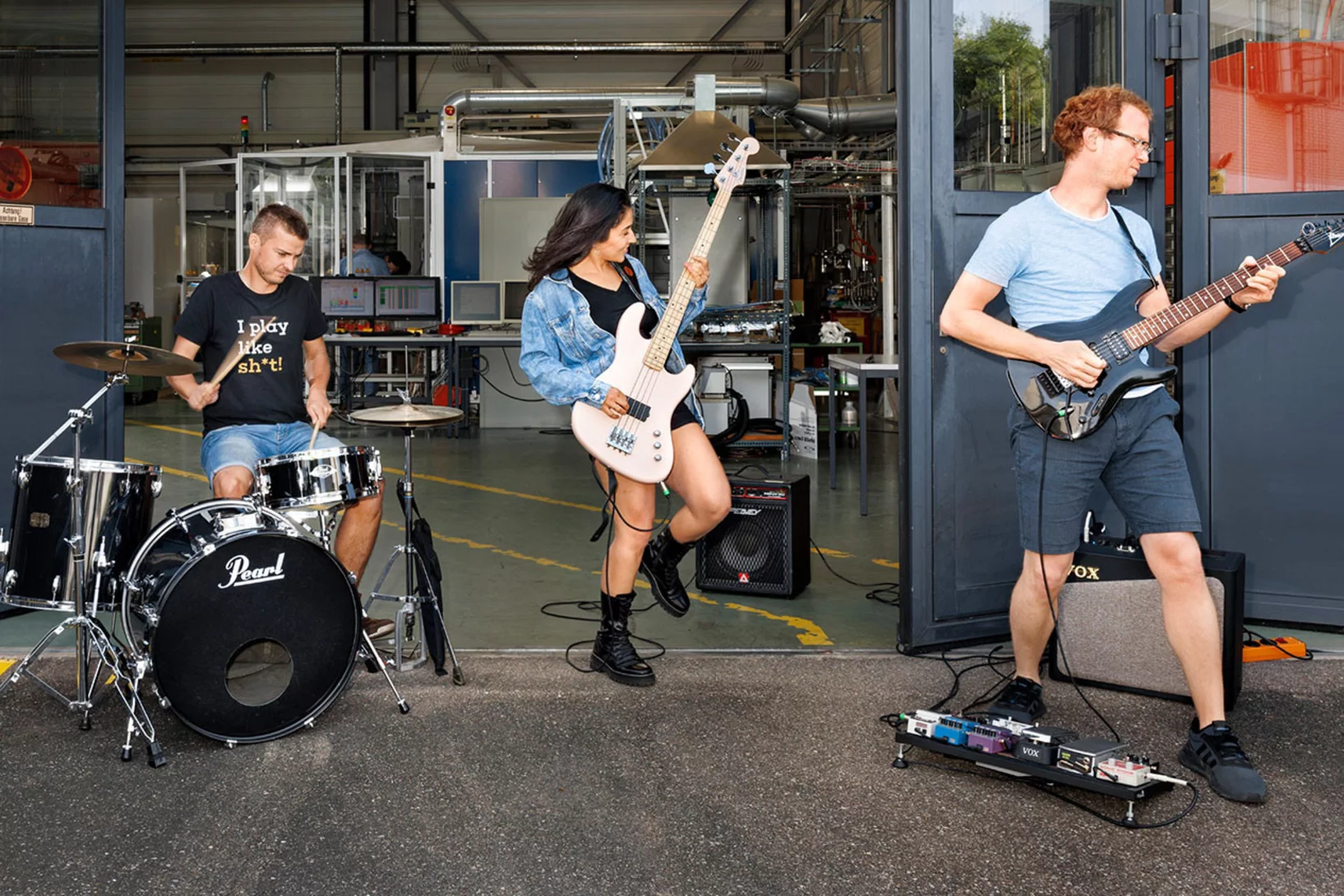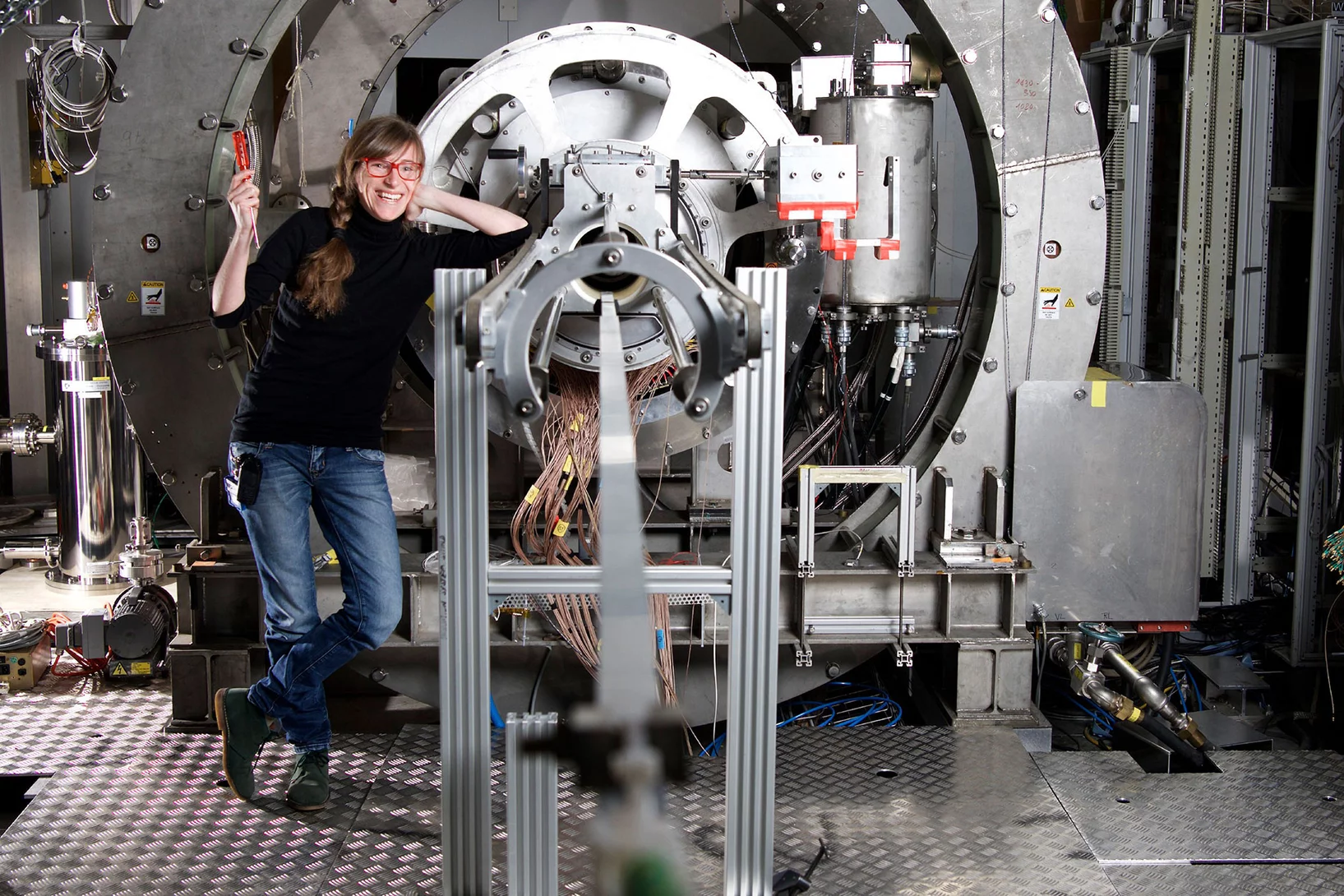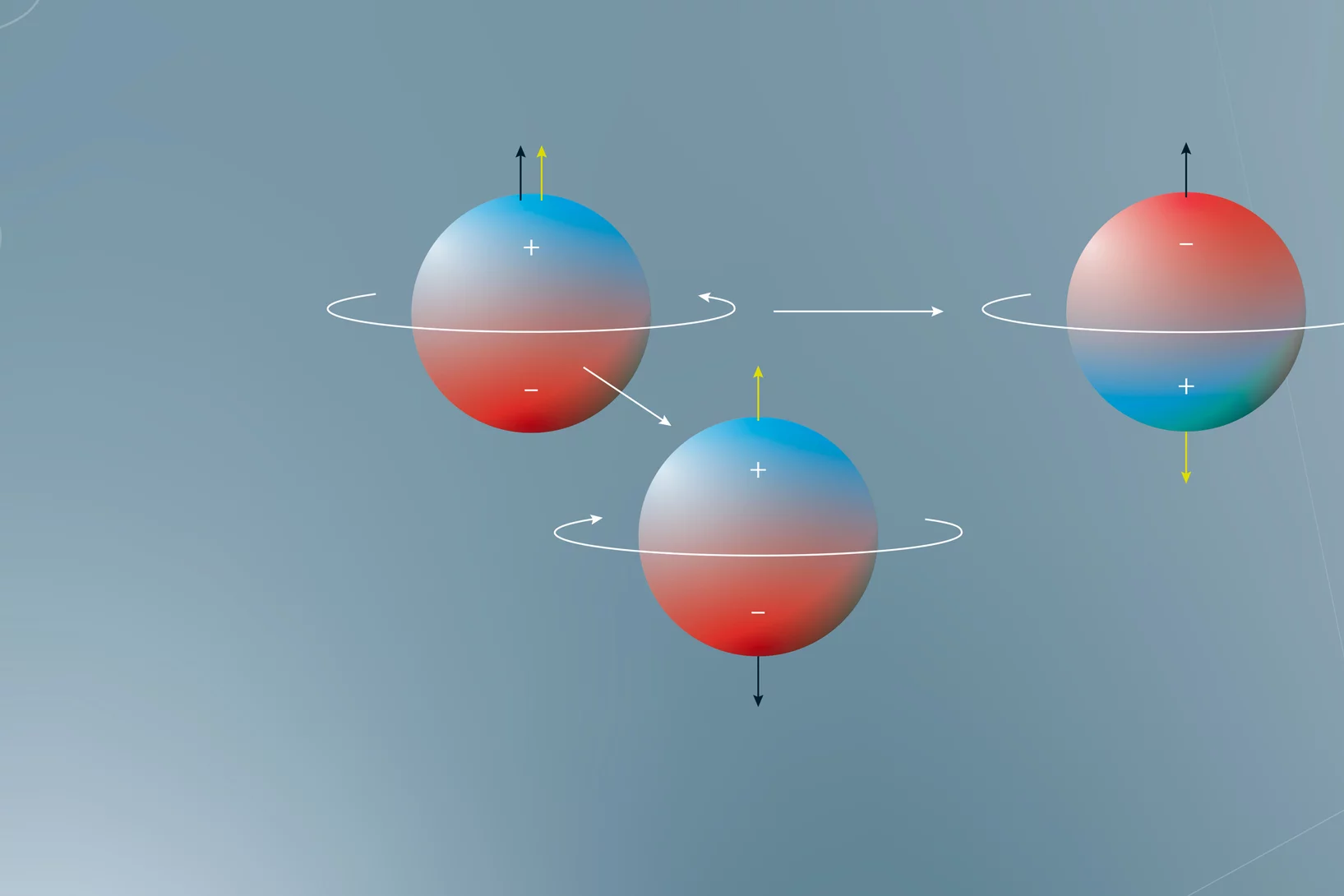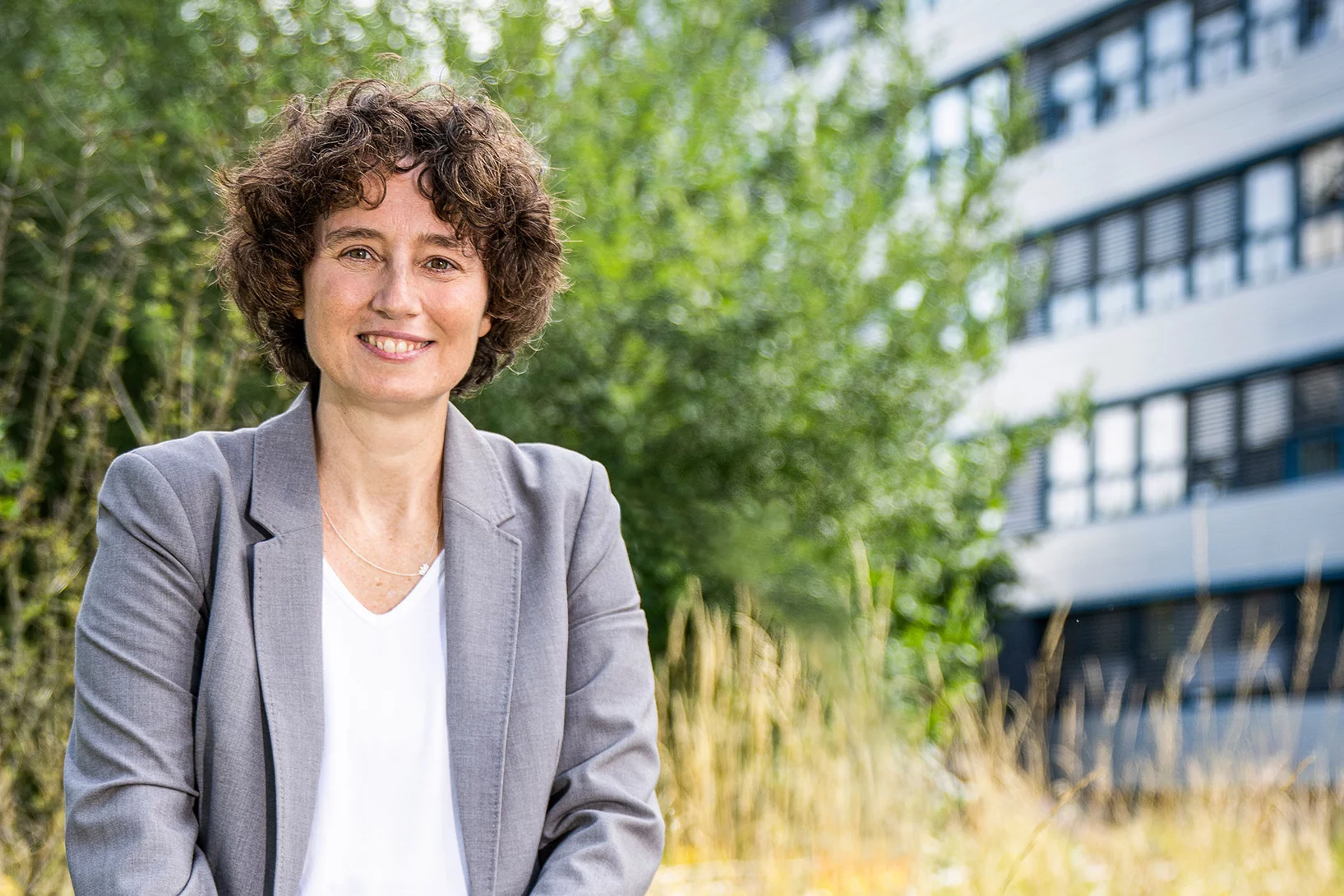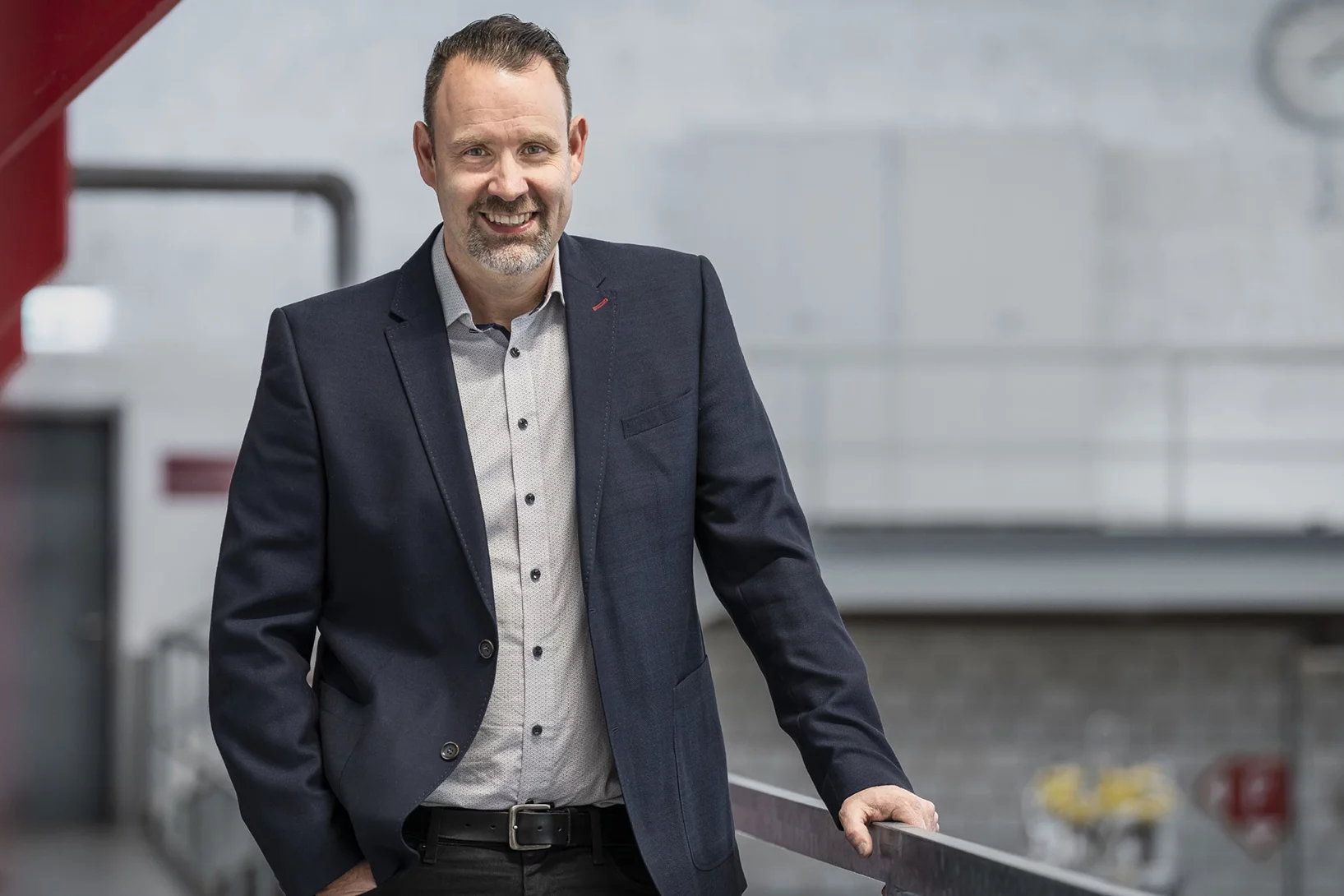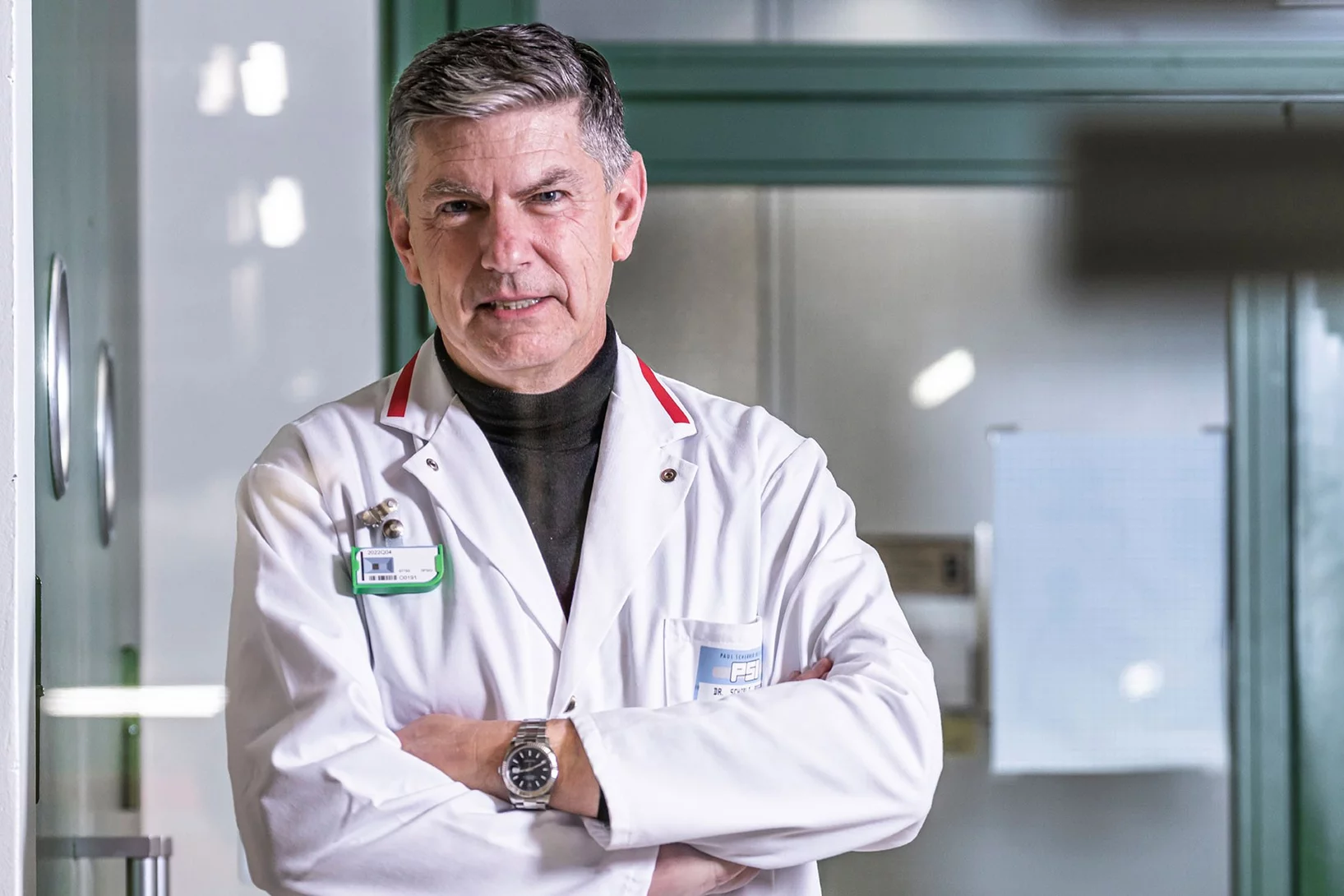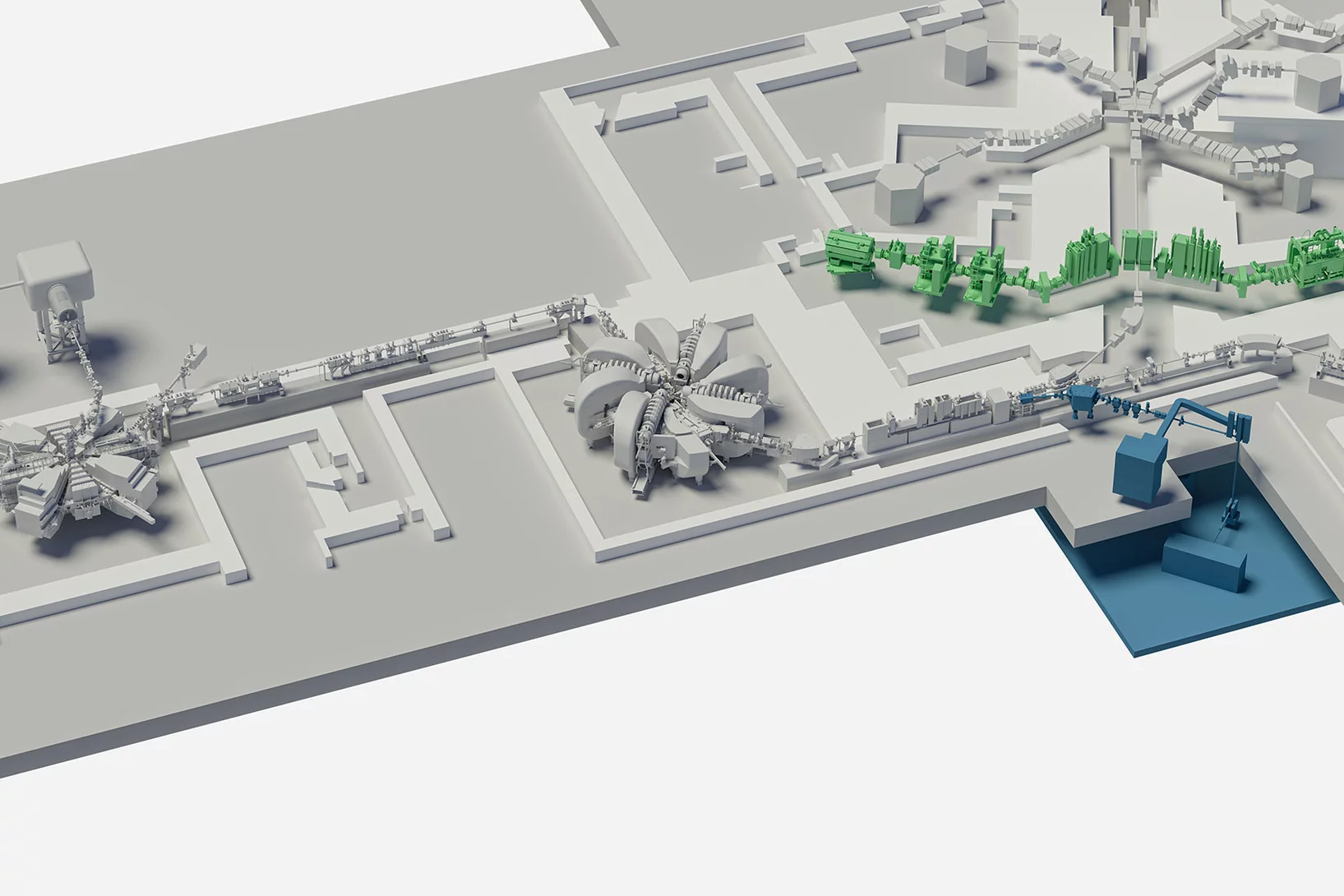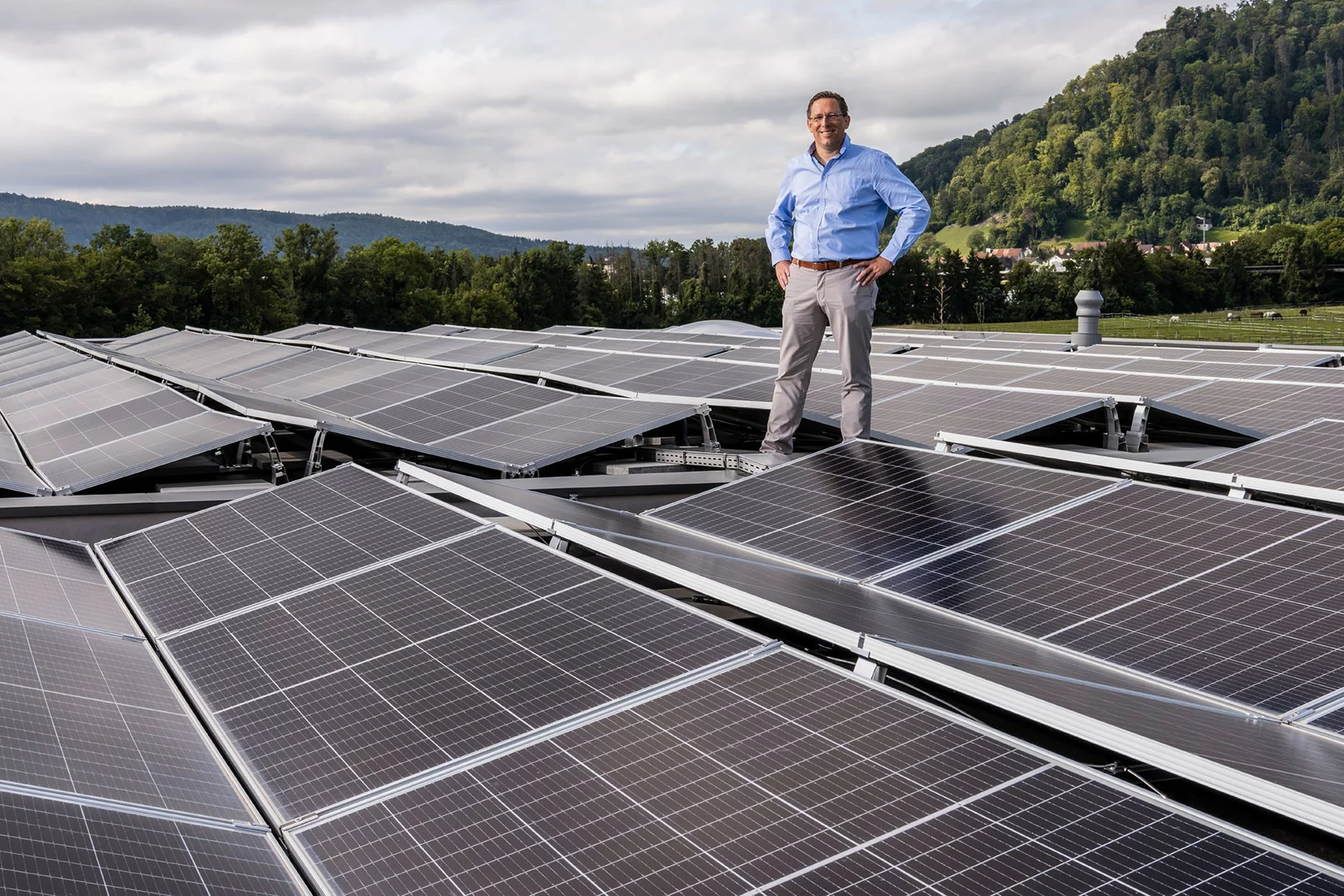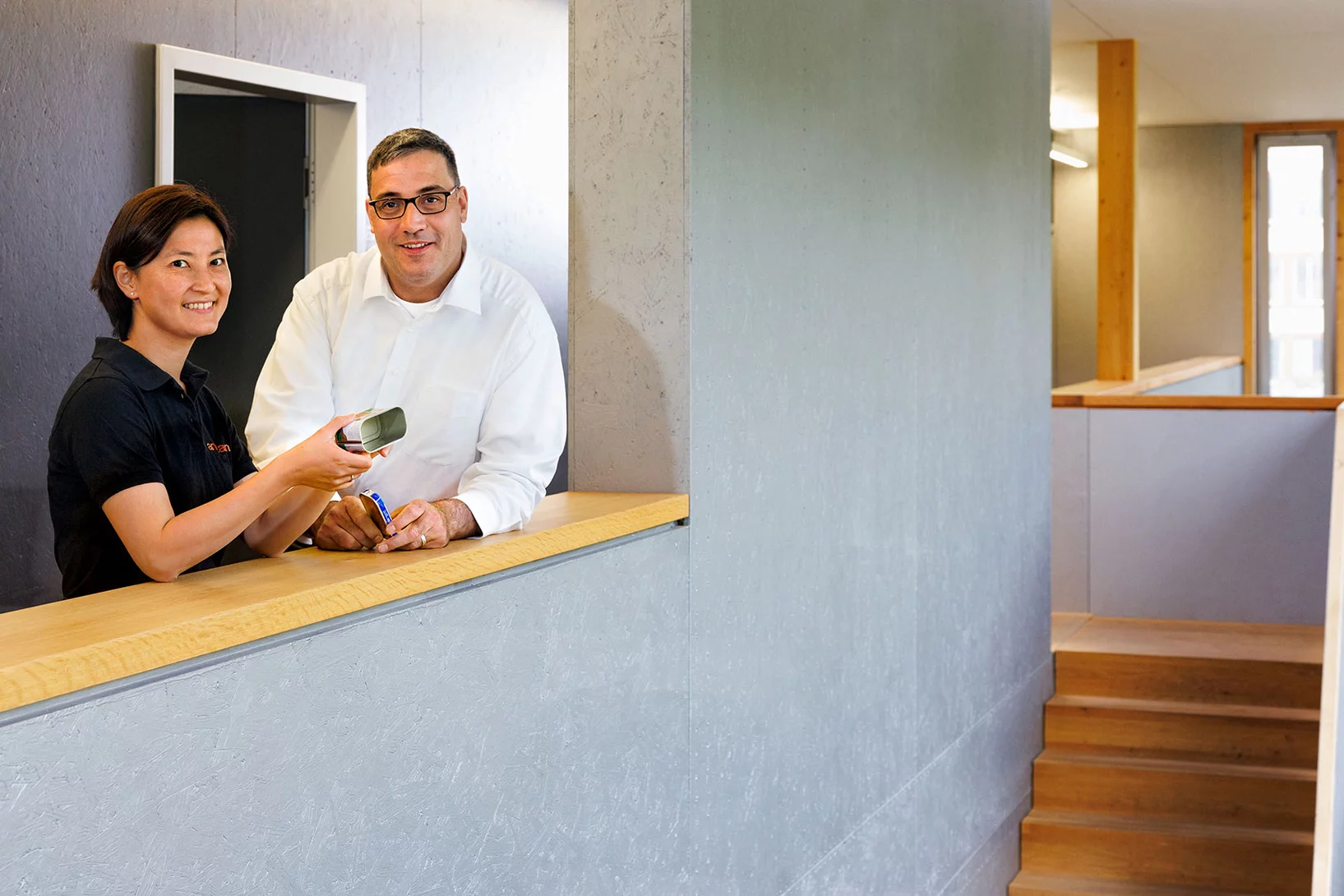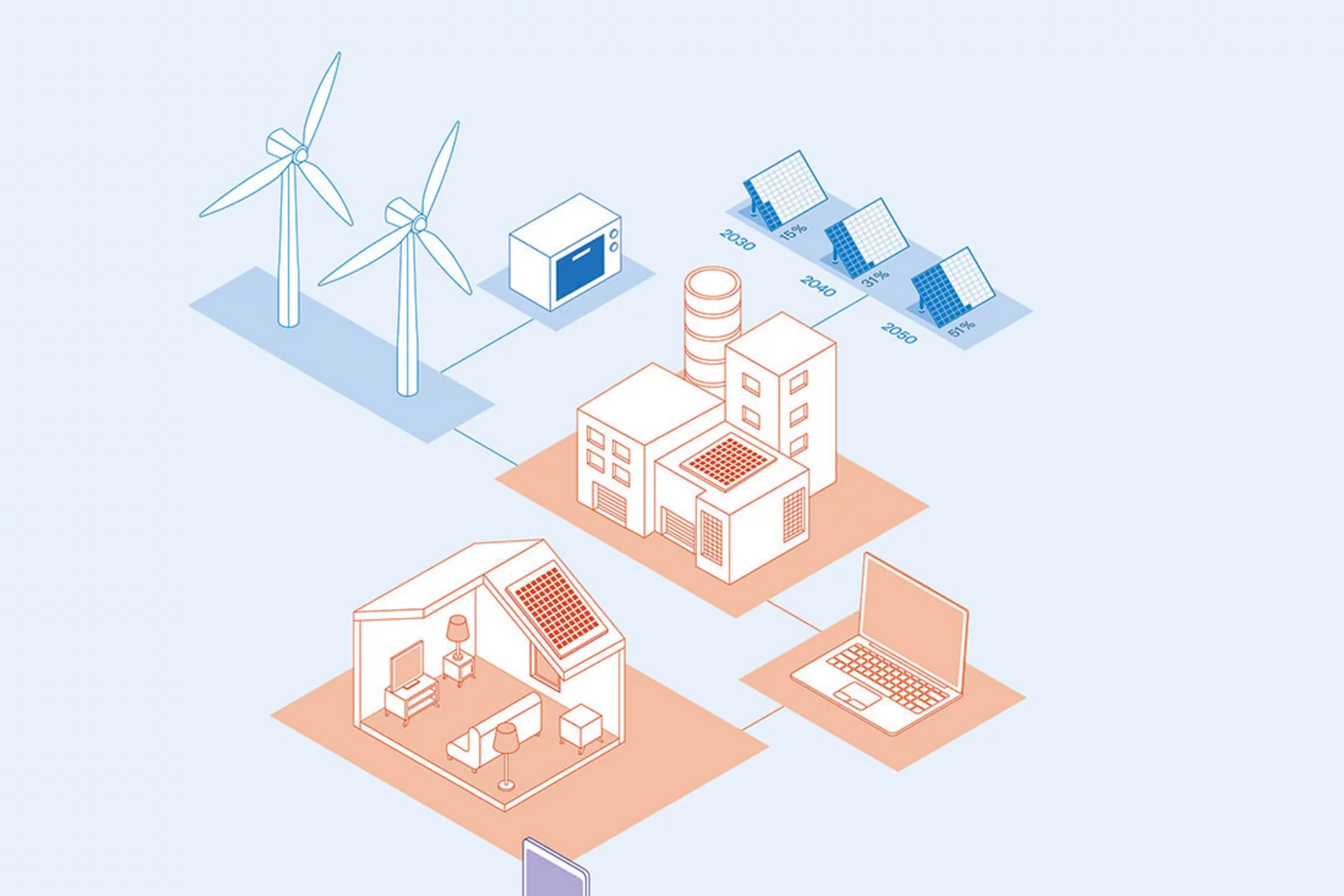Making powerful lithium-air batteries suitable for everyday use
Chemical processes in lithium-air batteries revealed using neutron beams and synchrotron light.
New nuclear medicine therapy successfully tested
A promising radiopharmaceutical against metastatic neuroendocrine tumours – developed at the Paul Scherrer Institute PSI – has been successfully tested.
Ideas with flair
The research carried out at PSI tends to be extremely complex and often difficult to describe. We gave researchers a tricky assignment: Sketch the basic idea of your research in a simple drawing.
Protons and other particles: The HIPA facility turns 50
Since 1974 HIPA has been accelerating protons for research.
Highlights – PSI research in 2023
A look back over the past 12 months.
„IMPACT is very important in terms of international competition“
Daniela Kiselev talks about the upgrade planned at PSI's proton accelerator facility.
Repairing genetic damage with sunlight
An international research team at SwissFEL of PSI has discovered how an enzyme repairs DNA damage with the help of sunlight.
Smart glass and music from SLS
Every year the PSI Founder Fellowship Programme supports new ideas for innovative applications with up to 150,000 Swiss francs.
How important is hydrogen for the energy transition?
Assessments by PSI energy expert Thomas J. Schmidt
Development of a Radioligand
Cristina Müller and her team are looking for a new means of visualising and further investigating the SARS-CoV-2 entry receptor using PET imaging techniques.
Grasping diseases by the roots
PSI researchers take pictures of cell nuclei using modern high-resolution imaging techniques, employ learning algorithms to comb through these data, and thus can more reliably identify anomalies.
Two projects launched to connect error-corrected qubits
Researchers at ETH Zurich and PSI are participating in two quantum computing projects that are being financed by the US research funding agency IARPA.
Better batteries for electric cars
PSI researchers make physical and chemical changes in batteries visible.
Using quantum computers already today
Analogue quantum computers make ultrafast chemical reactions observable.
More than just a support structure
Each cell in the human body contains a cytoskeleton. Contrary to what the name suggests, the cytoskeleton is far more than just a support structure.
Immerse yourself in the cytoskeleton
The cytoskeleton is a little marvel. Probing it promises to reveal, among other things, new possibilities for cancer therapy.
How can cobalt be reduced in EV batteries?
The electrification of transport is increasing. This means, more batteries are needed. However, some of these batteries contain an extremely problematic raw material: cobalt. PSI is researching alternatives.
Partnership to enhance both research and practice
The research institutes of the ETH Domain are strengthening their cooperation in strategic areas.
“Molecular chains could be useful for the electronics of the future”
Christian Wäckerlin talks about fundamental research into novel nanowires and their potential applications.
Bronze Age arrowhead is made of meteoritic iron
With the help of muons, PSI researchers were able to determine the origin of the material used for an arrowhead.
A metal alloy like a sponge
Once the vacuum chambers for the SLS 2.0 upgrade are the right shape, they still need a special surface coating.
A six-metre high oven
The most complicated vacuum chambers for the SLS 2.0 upgrade are being built in the PSI workshop.
How can renewable electricity be used all year round?
The federal government’s Energy Strategy 2050 envisages a substantial expansion of photovoltaic systems. But where will the electricity come from when the sun isn’t shining? The solution could be hydrogen.
500 vacuum chambers for the new ring
Making the tube through which the electrons will race after the SLS 2.0 upgrade.
PSI researchers use extreme UV light to produce tiny structures for information technology.
Synchrotron light can be used in follow-up after a heart transplant to determine whether the body may be rejecting the new organ.
Breaking the ground as a game
Construction of new PSI day-care centre begins.
Hunting for the radius of a proton
0.000 000 000 000 840 87 (39) metres – scientists working at PSI have come up with this astonishing figure for the radius of a proton.
Wood: A wild card for the energy transition
The role of the natural resource for security of supply in Switzerland
Methane as an energy store
Researchers at PSI and the start-up AlphaSYNT are working together on a solution for efficiently storing energy.
Always on the pulse of time
Presenting two picture galleries to mark the 35th anniversary of the Paul Scherrer Institute PSI.
X-ray imaging after heart transplantations
Synchrotron light can be used in follow-up after a heart transplant to determine whether the body may be rejecting the new organ.
What can’t be bought, we develop ourselves
Many components for the experiments the researchers at PSI just develop themselves.
How can we secure our gas supply?
Switzerland depends entirely on foreign gas imports. How can we escape from this dependence and guarantee our gas supply? Synthetic methane might be a solution.
Music at PSI
Sometimes musicians drown out the technical background noise at PSI.
Encouraging equal opportunities in research
International Day of Women and Girls in Science: To celebrate the day, we present five outstanding women working in science at PSI.
More light in the darkness
At PSI, researchers want to fill the missing gaps in the Standard Model of particle physics with the help of the large research facilities.
The best of both worlds
Annalisa Manera works as a nuclear researcher at PSI and as a professor at ETH Zurich. A portrait.
Energy efficiency in times of potential power shortages
How PSI is continuously improving the energy efficiency of its own infrastructure and large research facilities
Radionuclides for personalised medicine
TATTOOS is part of the upgrade project IMPACT. Roger Schibli explains its importance for the future of cancer treatment.
“A jewel we must treasure”
HIMB is one of the two parts of the upgrade project IMPACT. Klaus Kirch speaks about the plans.
A two-part upgrade for the proton accelerator
A two-part upgrade is planned for HIPA starting in 2025. Preparations are already under way.
Preparing for energy shortages and blackouts
Peter Burgherr is a risk researcher at PSI. In this interview he talks about possible power shortages in the coming winter and how to prepare for them.
Energy security
How can Switzerland achieve the energy transition? PSI researchers provide answers with a unique computer model.
Of fusion reactors, fuel cells, and tin cans
The technology transfer centre ANAXAM has been facilitating access to the material analytics at PSI.
“More objectivity would be helpful”
The current energy debate could do with more facts and less gut feeling – argue Thomas J. Schmidt, renewables expert, and Andreas Pautz, nuclear energy specialist.
Open Day 2022
Nitrogen ice-cream, the Spanisch-Brötli Railway and loads of science – PSI invited the public to its Open Day where visitors got their finger on the pulse of research.
Silver Medal in Electronics for Mario Liechti
PSI electronics technician Mario Liechti comes in second place at the world championships for non-academic professions.
Collecting ice cores before it's too late
PSI researcher Theo Jenk talks about the challenges of ice core research during the climate change crisis.

